It wasn’t released on April 1st, but the BMW M50d could have just as easily been an April Fool’s Joke. Four turbos? Surely not?
It’s no joke. While the previous gen M50d had to make do with just three turbos, BMW decided it simply wasn’t enough, and added another one to the 3-litre straight six diesel motor that we already know and love.
But is it overkill? Uncontrollable acceleration, coarseness, jerky driving – are these going to be the result of a quartet of turbos? I hope not, but there’s only one way to find out.
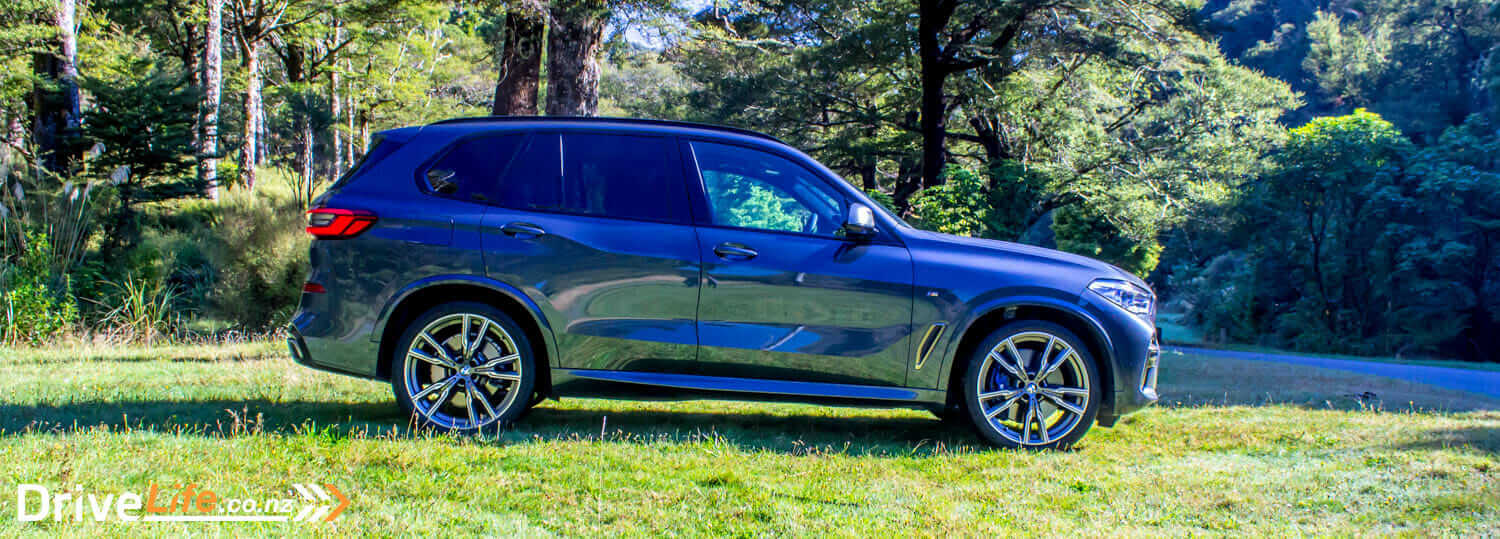
What’s In The 2019 BMW X5 Range?
It was only a month ago that we tested the X5 xDrive30d, and nothing’s changed since then. You get to pick from three models of X5; the base model xDrive30d, the xDrive40i M Sport, and the xDrive M50d.
There’s a base price of $135,200 for the 30d, the 40i is $147,900, and the M50d starts at $177,900.
The 30d has a 3.0-litre, straight-six turbo-diesel motor, putting out a good 195kW of power and an excellent 620Nm of torque, getting you to 100km/h in 6.5 seconds.
If you buy the 40i M Sport, your powertrain changes to a 3.0-litre, straight-six, twin-scroll turbo petrol engine, with a meaty 250kW of power but a drop in torque to 450Nm. Your 0-100 time is now 5.5 seconds.
At the top of the tree is the stump-pulling M50d. This beast runs the same 3.0-litre diesel engine, but is fitted with no less than four turbochargers. This means you have 294 kilowatts of power, and an amazing 760Nm of torque. 0-100 takes just 5.2 seconds.
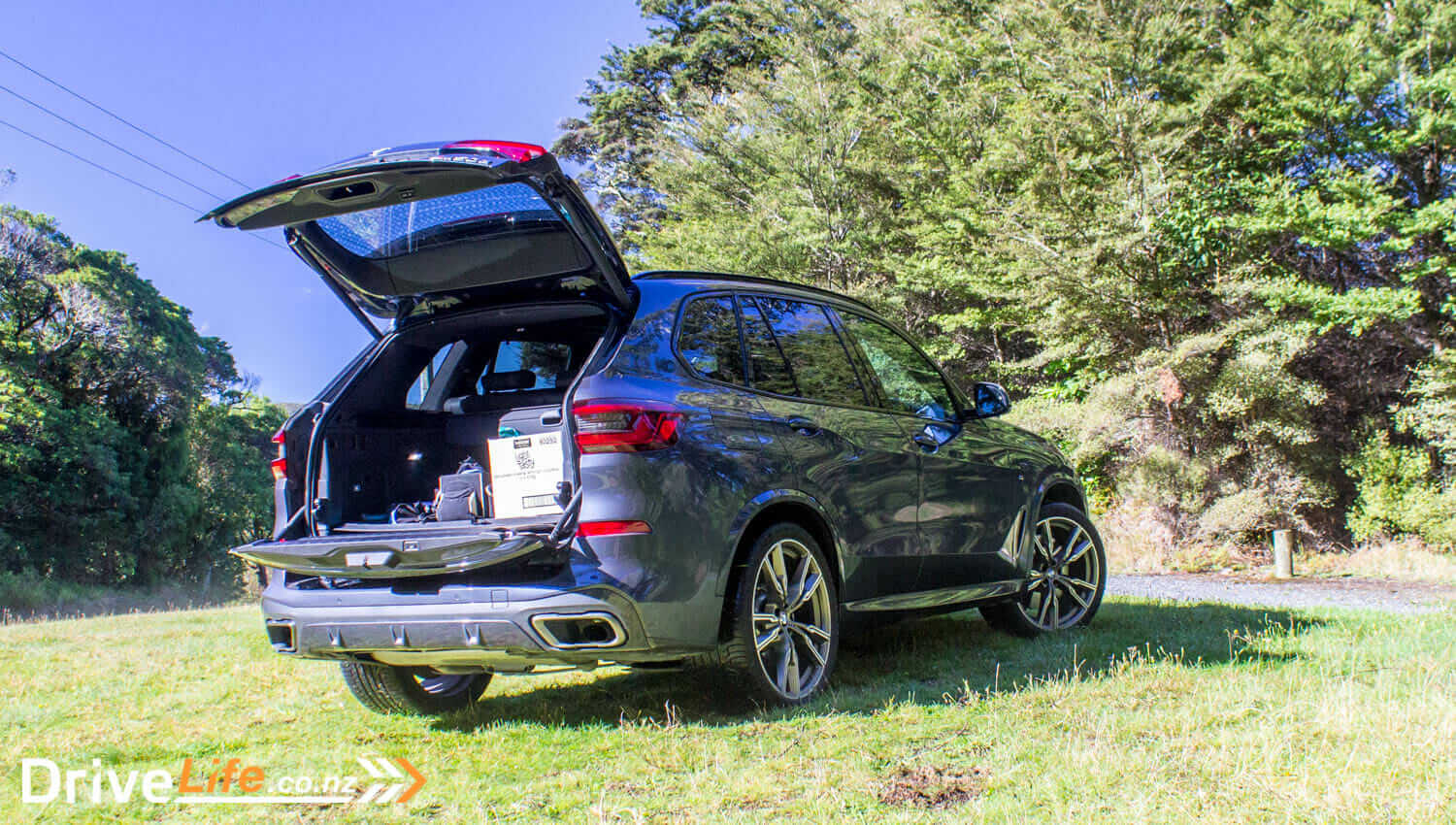
Standard equipment levels are high, as you’d expect with a starting price knocking on the door of $135K. This means permanent four-wheel drive, dynamic damper control, auto start/stop, brake energy recuperation, hill descent control, keyless entry and start, 20” alloy wheels, adaptive LED headlights, high beam assist, LED front fog lights, LED rear taillights, ambient interior lighting with 6 colours, Welcome Light Carpet and Dynamic Contour Lighting, auto wipers, auto headlights, heads-up display, rear cross traffic alert, steering and lane control assistant, lane keep assist, crossroads warning, evasion aid, automatic parking, parking sonar front and rear, Reversing Assistant, 360 degree camera view system, run flat tyres, BMW Live Cockpit with a 12.3” display, BMW Gesture Control, adaptive cruise control with stop/go, rear door sun blinds, heated front seats, leather upholstery, heated/cooled cup holders, digital radio tuning, wireless phone charging, hifi loudspeaker system, BMW Connected + system with Concierge Services, Connected Drive, Intelligent Emergency Call, Real Time Traffic Information, Remote Services and TeleServices.
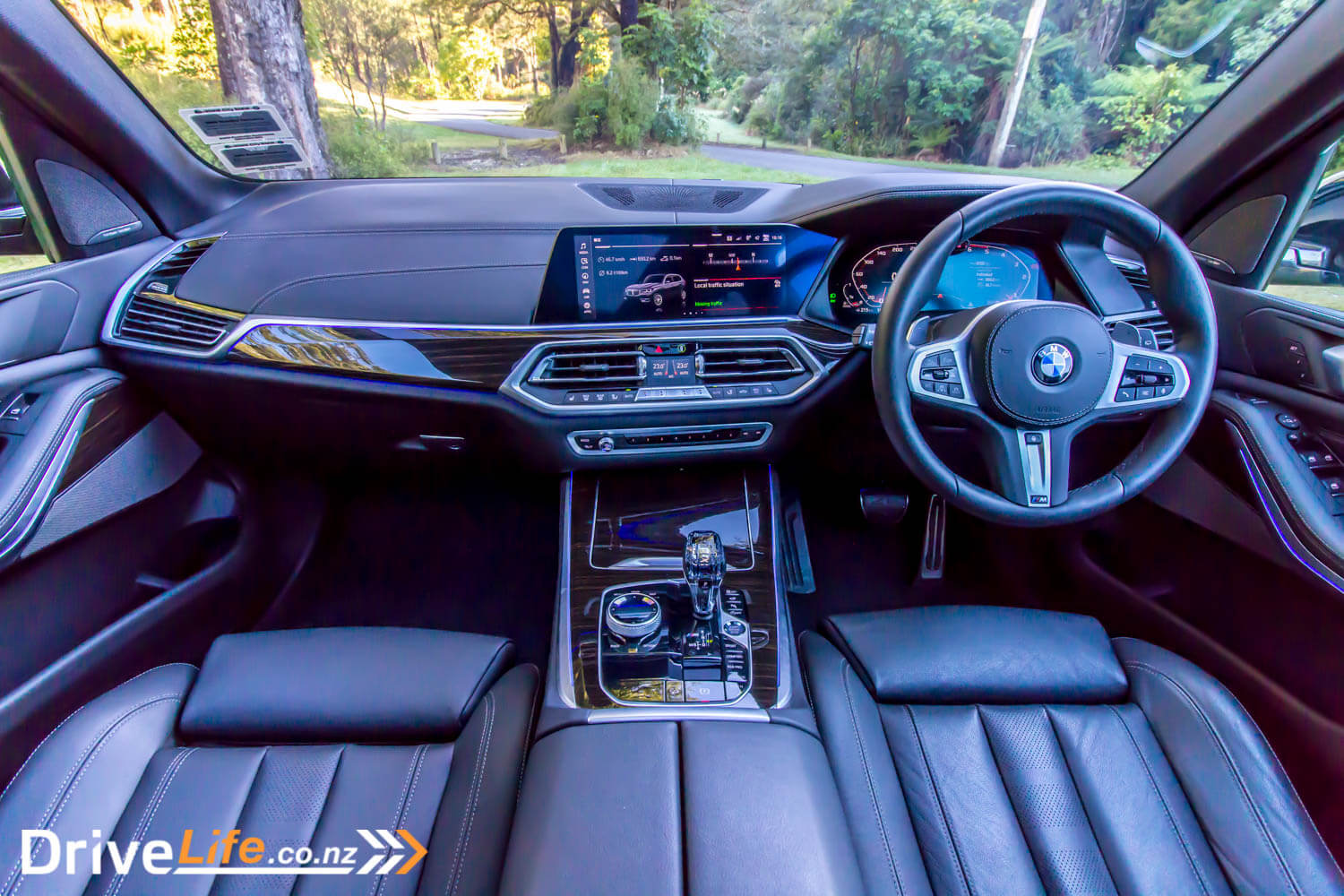
But wait, there’s more. You also get 2-zone AC, automatic tailgate operation including the spilt tailgate, both front seats with electric adjustment including headrests, luggage compartment separating net, and a sports leather steering wheel.
Moving to the 40i M Sport, this adds 21” alloys, BMW LaserLights, M Sport brakes, M Sport steering wheel, M Sport package, M Sport exhaust system, and Adaptive M suspension.
Of course, there’s still the M50d. On top of the above, it changes to 22” alloys, Adaptive M Sport Suspension Professional, 4-zone AC, BMW Display Key, the Crafted Clarity Glass package, Heat Comfort Package (front), Integral Active Steering, a Harmon/Kardon sound system, an M Sport Differential, a panoramic glass sunroof, and lastly soft-close function for all doors.
Our test car was fitted with a few extras, like metallic paint (Arctic Grey) at $1,190, sun protection glazing at $1,000, and an electrically-folding tow bar for $2,400. This brought the as-tested price of our test car up to $182,490.
All X5s are fitted with an 8-speed sport automatic gearbox.
There are literally pages of options for this car – to see more, check out BMW New Zealand’s website.
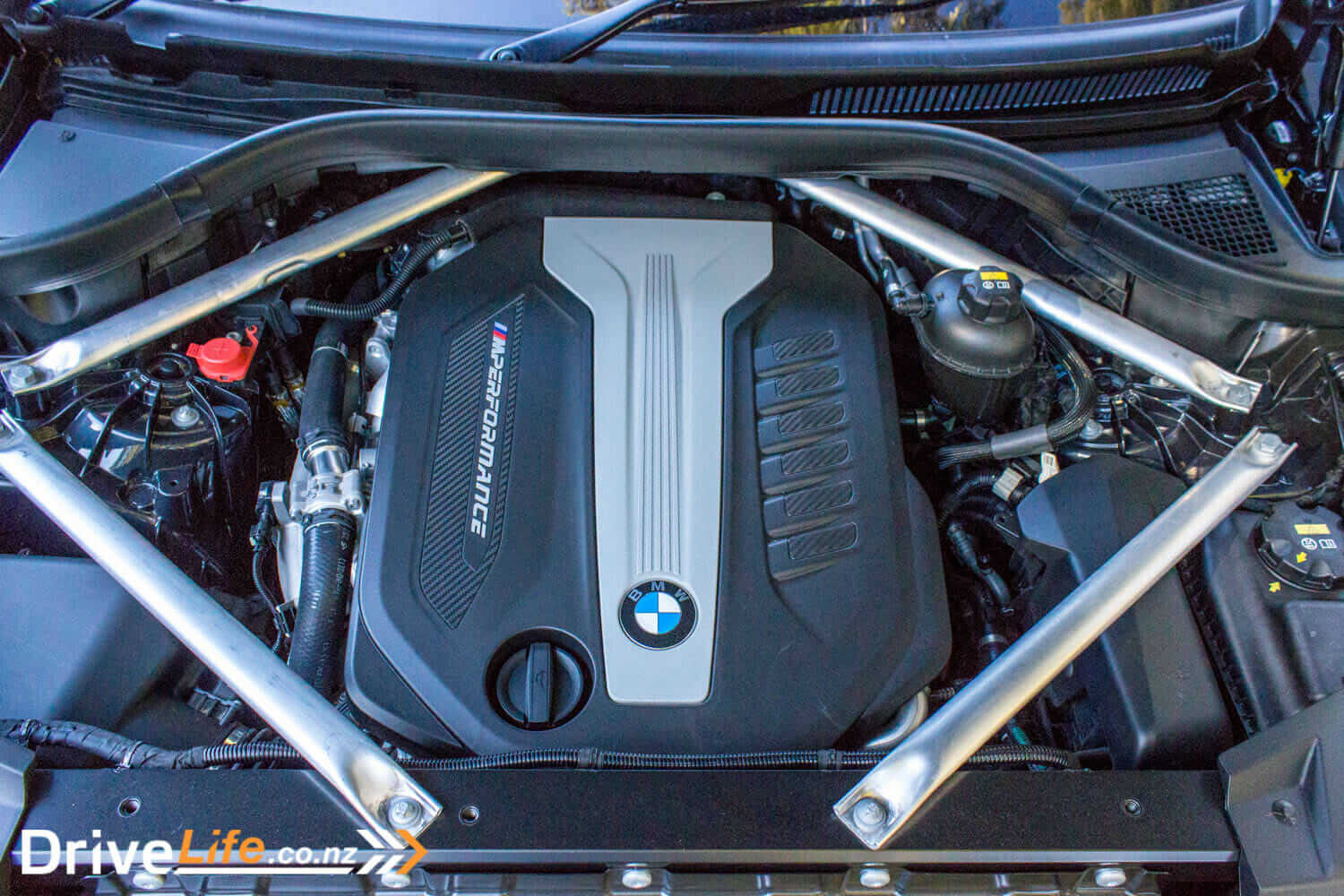
First Impressions Of The 2019 BMW X5 M50d
I had just got out of a Mazda CX3, so the X5 felt enormous. The reality is that it is a big car, with a bonnet that stretches out wide in front of you.
Our last X5 was finished in Arctic White, which looks just fine. This time, our X5 was a special kind of grey and looked…okay I guess. I’m not a grey/silver car fan, but the grey colour did make the X5 blend into the rest of the traffic as much as it could, and that’s likely what some owners want.
The ‘new’ kidney grille has grown in size from the last gen of X5 – it’s the same as it was size-wise on the xDrive30d, but this time instead of a chrome finish, it had a sort of anodised look to it, which wasn’t so much in-your-face as the chrome finish on the xDrive30d. I liked it more and more over the couple of weeks I had with the car.
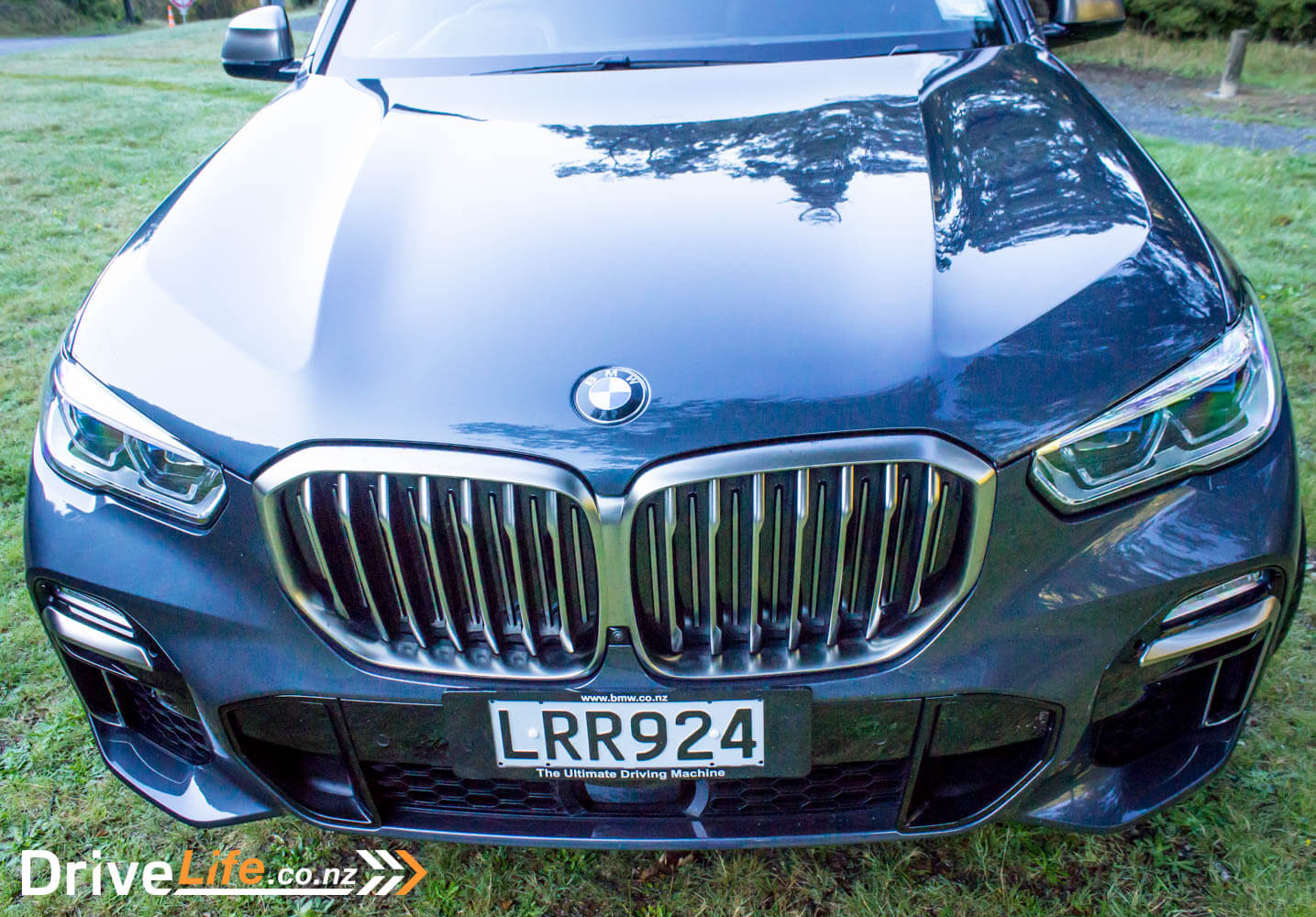
What’s The Inside Like On A 2019 BMW X5 M50d?
It felt like home again, after the xDrive30d. Thankfully the M50d has a huge panoramic sunroof, and I left the blind open all the time. It lightened up the interior no end, compared with the base model.
Everything else seemed the same, even down to the glass gear shifter. This was an option as part of the Glass Craft Elements package on the X5, and our last test car had this option. It’s standard equipment on the M50d. Is that a good thing? It all depends if you actually like a glass gear shifter with sharp edges. I don’t, but I heard of one female motoring journalist that does. It feels awkward and cold in your hand, and just doesn’t feel good, in my opinion. The Glass Craft Elements package that’s standard on the M50d includes a piece of glass over the audio volume knob, the iDrive controller and the start/stop button.
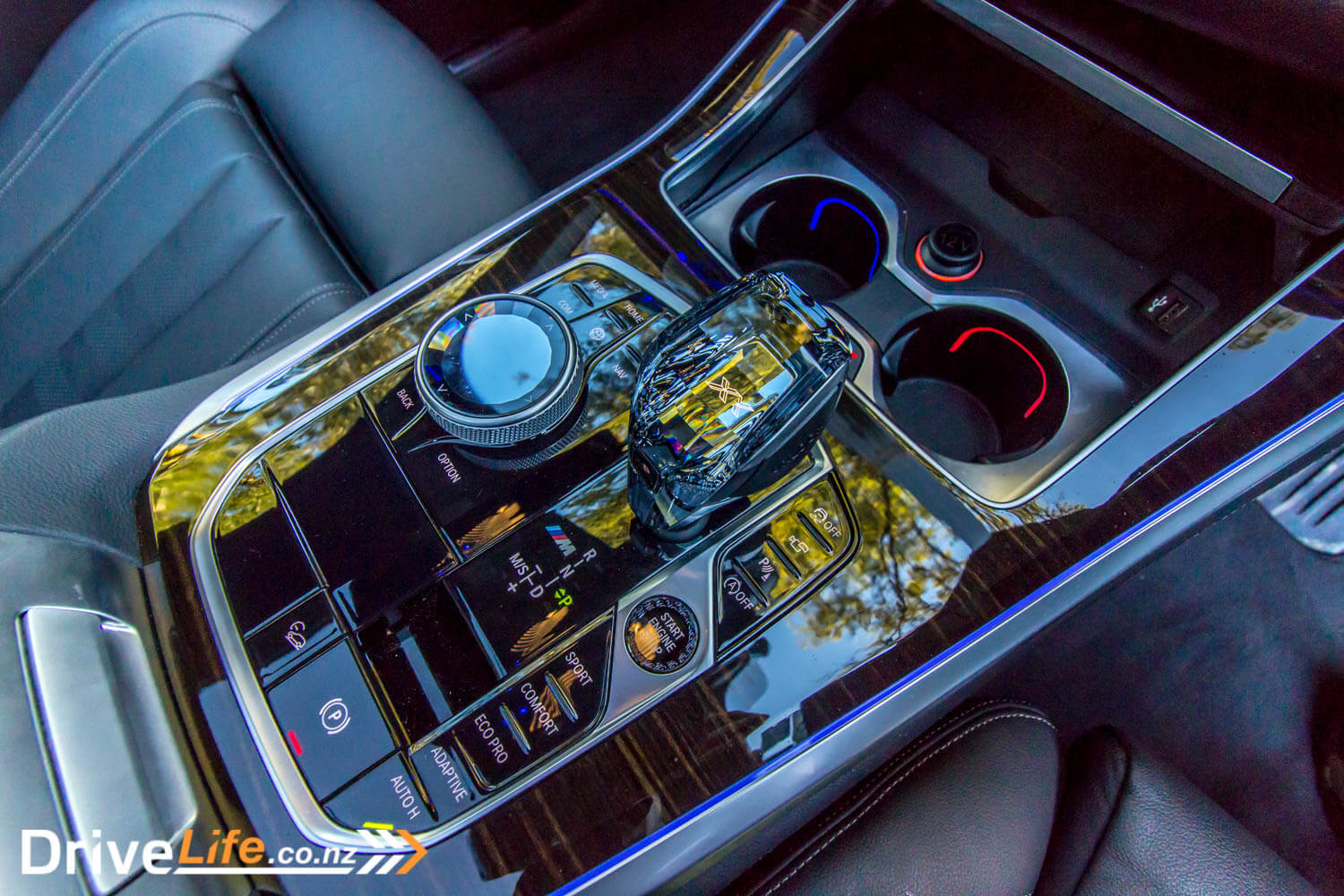
There’s AC controls in the rear of the M50d; the xDrive30d didn’t have this, and while it’s not a deal breaker, it’s something that’s expected at this price point.
The seats have electric adjustment for almost everything, and are a lesson in seat comfort. Interesting that while even headrest adjustment is electric, the cushion adjustment is manual. I can easily cope with doing this manually, but other cars in this price range have electric cushion adjustment.
And yes, that cheap-looking speaker grille is still up there on the dash too – it stands out like a sore thumb. Please BMW, you can do better than this.
Don’t get me wrong – as far as things I don’t like about the interior of the X5, the glass shifter and speaker grille are it. Everything else looks and feels great, and all controls are well thought out and work perfectly.
If you want a bit more detail, check out the xDrive30 30d review.
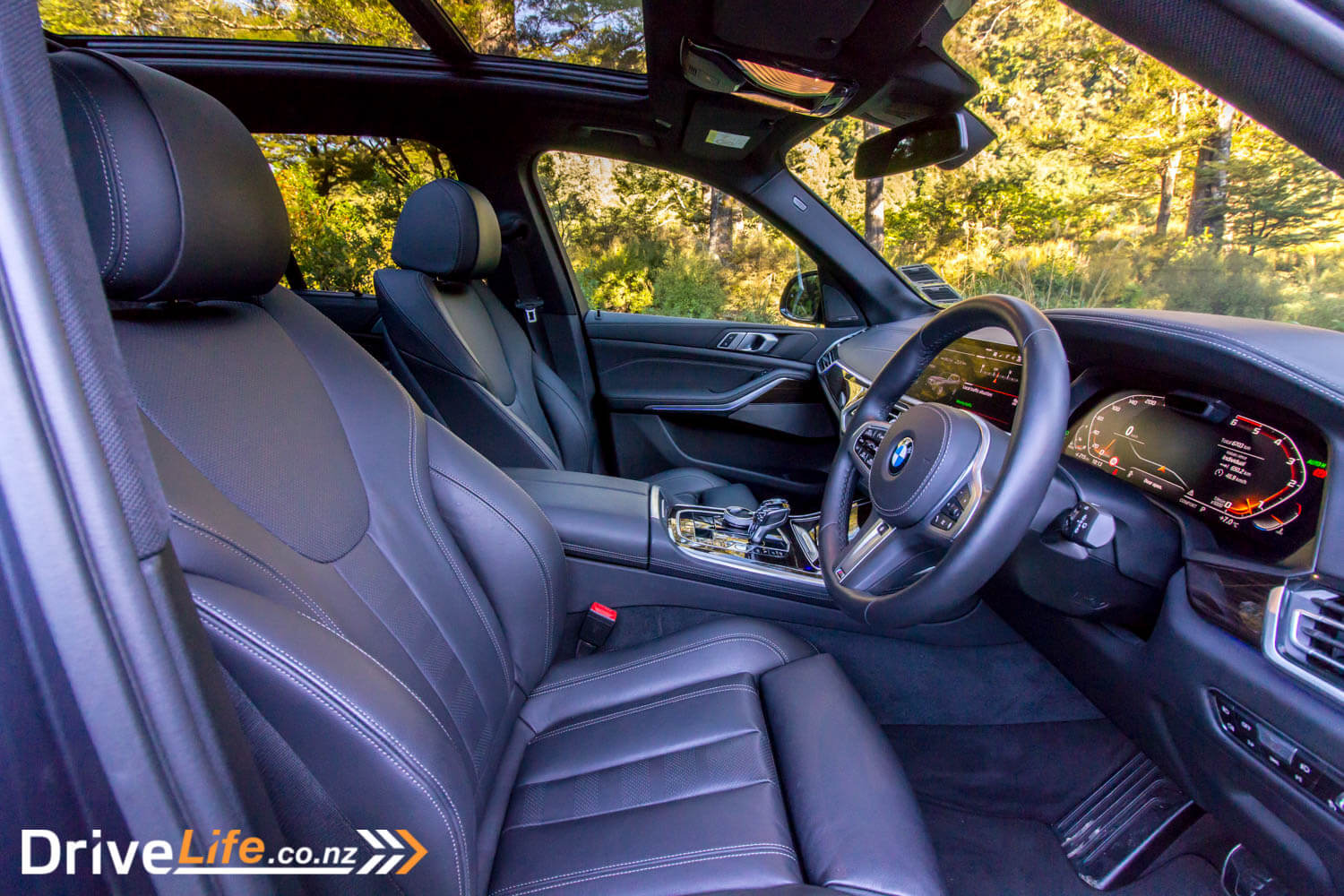
What Does The 2019 BMW X5 M50d Drive Like?
So wide and tall. A friend parked next to me in a car park at one point, and said he felt like there was an eclipse occurring, as darkness descended upon his car. But in a day or two, it’s all familiar and you make allowances for the width of the X5.
I did take the car out to Makara one day, and man, it felt wide on that narrow road, as the wheels were over the centre line at times. Instant memories of the Audi Q8.
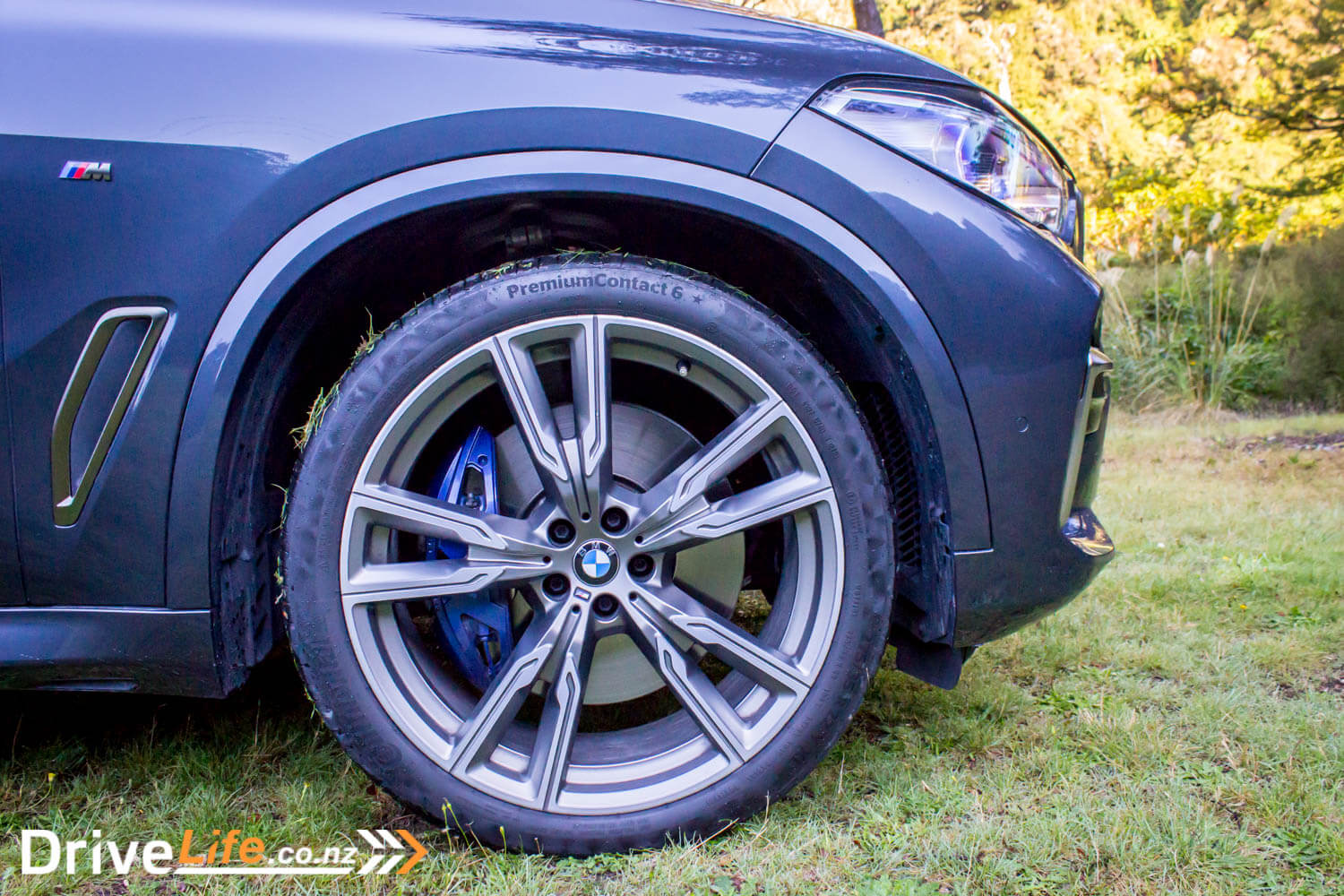
Since I had the xDrive30d for just a week, it was going to be great to get two weeks in the M50d to see what I really like/don’t like about the X5 in general. Our test coincided with the end of Daylight Saving time, and all that goes with that. While some may say that the X5’s ‘Welcome Mat’ lighting is too much, the reality is that it’s pretty handy, as well as looking quite cool. Going anywhere near the car with the key in your pocket will turn on the Welcome Mat, with bands of light streaming across the ground alongside the car. It’s pretty practical, and not just a gimmick.
There was another event while I had the X5 – a cold snap – and I’m talking freaking cold. It’s the same scenario as the Welcome Mat lighting package; people said at the start that having heated armrests and centre console was a step too far, but when it’s cold out for a week solid? You will use them, and you will enjoy them. My passengers certainly didn’t complain.
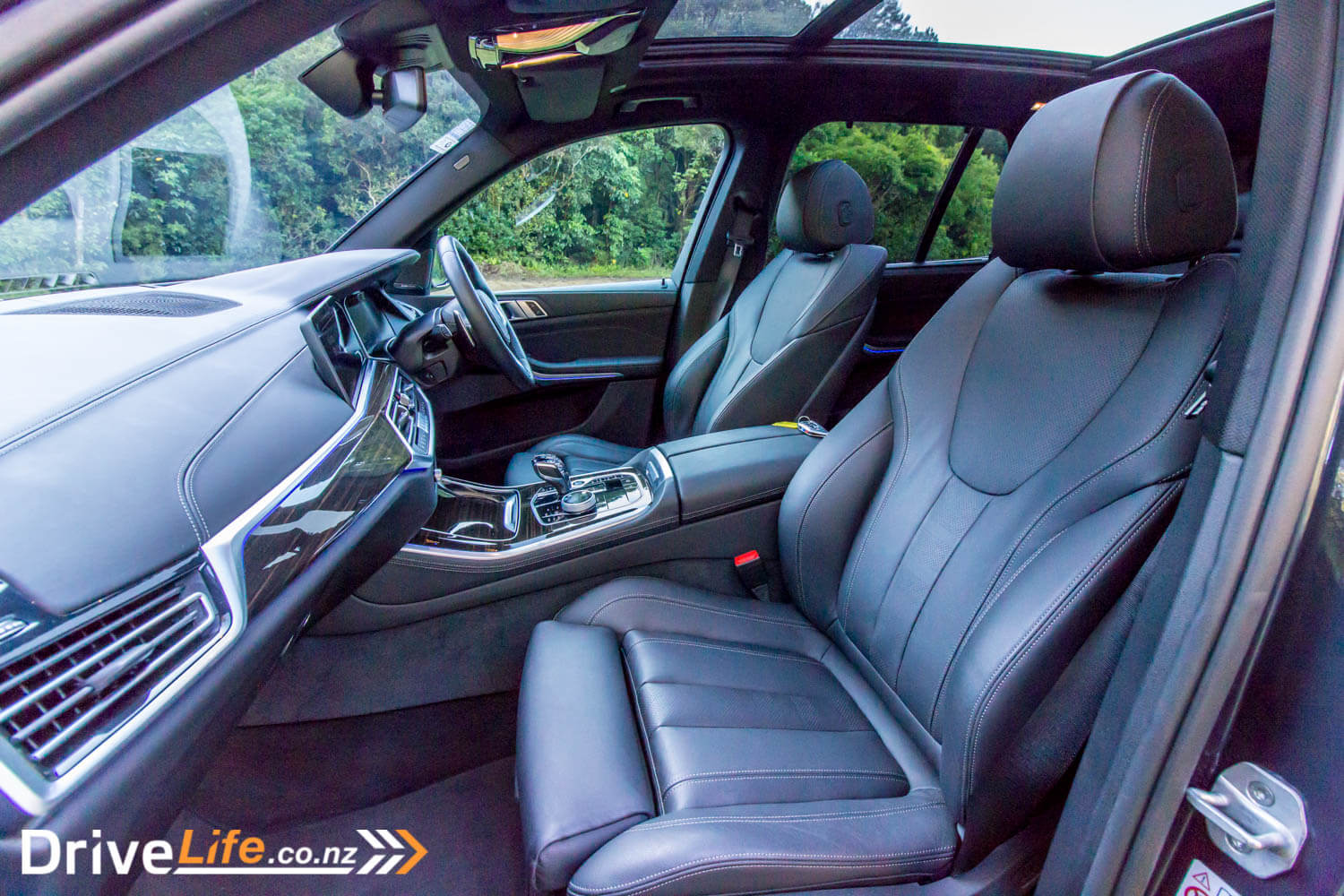
Some of the day to day things for the M50d are going to be exactly the same as for the xDrive30d, so I won’t linger too much, but as I said, two weeks makes you more aware of good and not-so-good things. The X5 range comes standard with wireless phone charging – if your phone is compatible – and I use this extensively in any car. Some brands will give you a verbal warning that you’ve left your phone on the charger when you turn the car off, which is really handy. It’s easy to forget that it’s on the wireless charger and not in your pocket. The X5 gives you a too-small message at the bottom of the dashboard as a reminder. I know, it’s just a small thing, but too many times I had to unlock the X5 to retrieve my phone that I’d left behind. Likely this is more a problem with my memory than the car, but an audio/verbal warning would have been great.
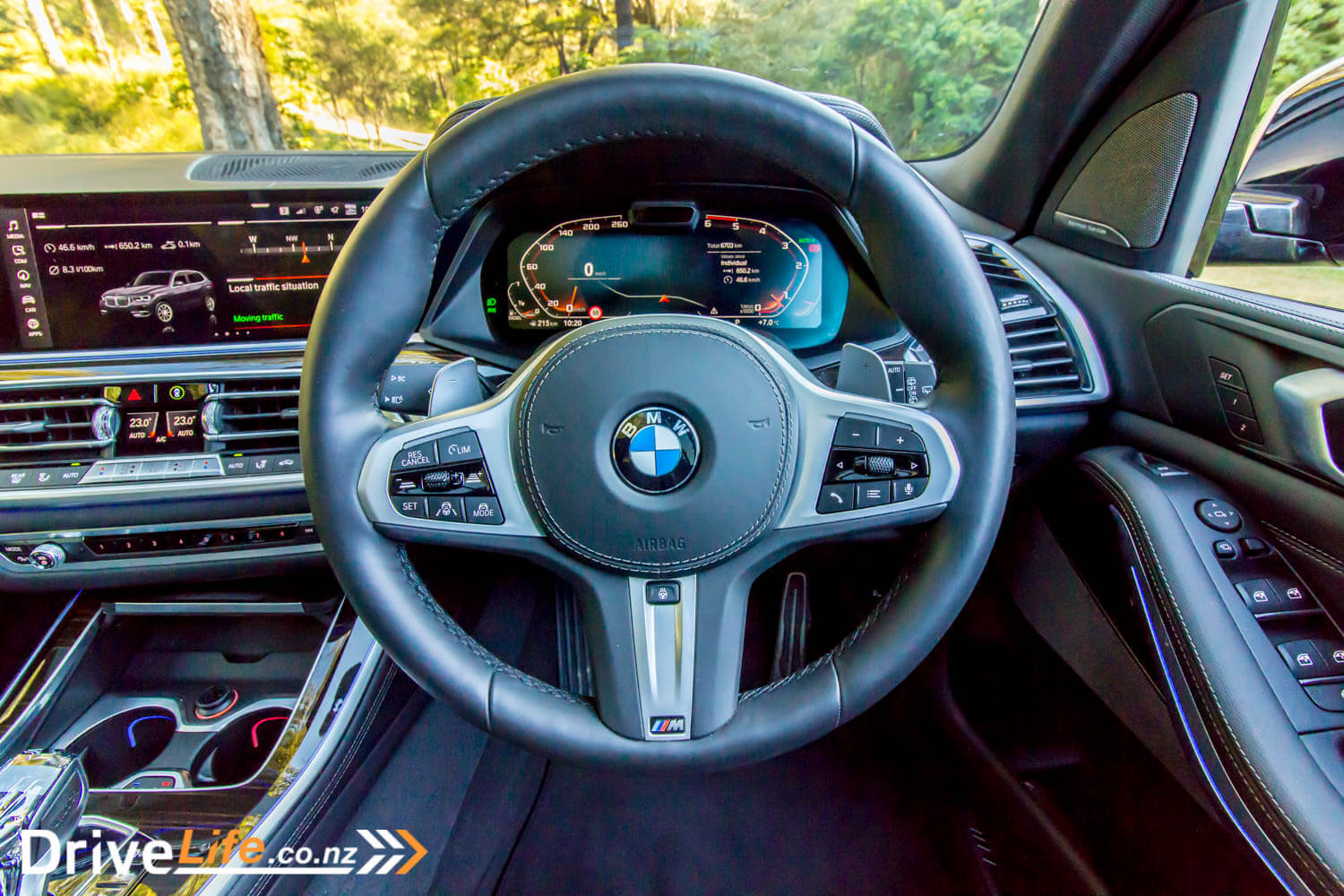
Other things I still love include the instant-on for the central display and Bluetooth connection. As soon as you get near the X5 with the key in your pocket, the screen starts to wake up. In some brands, it can take a very long time for the central display to actually come up. With the X5, it’s on before you even start the car. Thankfully Bluetooth is the same, reconnecting instantly without any issues.
The heads-up display (HUD) is the same as the base model, and totally brilliant. Any other HUD will now need to measure up to this one, with its massive 7” wide display. Entire streets are shown, as are motorway lanes – almost everything you need is on that massive HUD. The only thing I still missed is knowing what gear I am in, and I noticed this on the xDrive30d as well. In Sport mode at least, I should know what gear I am in without having to look down to the dashboard.
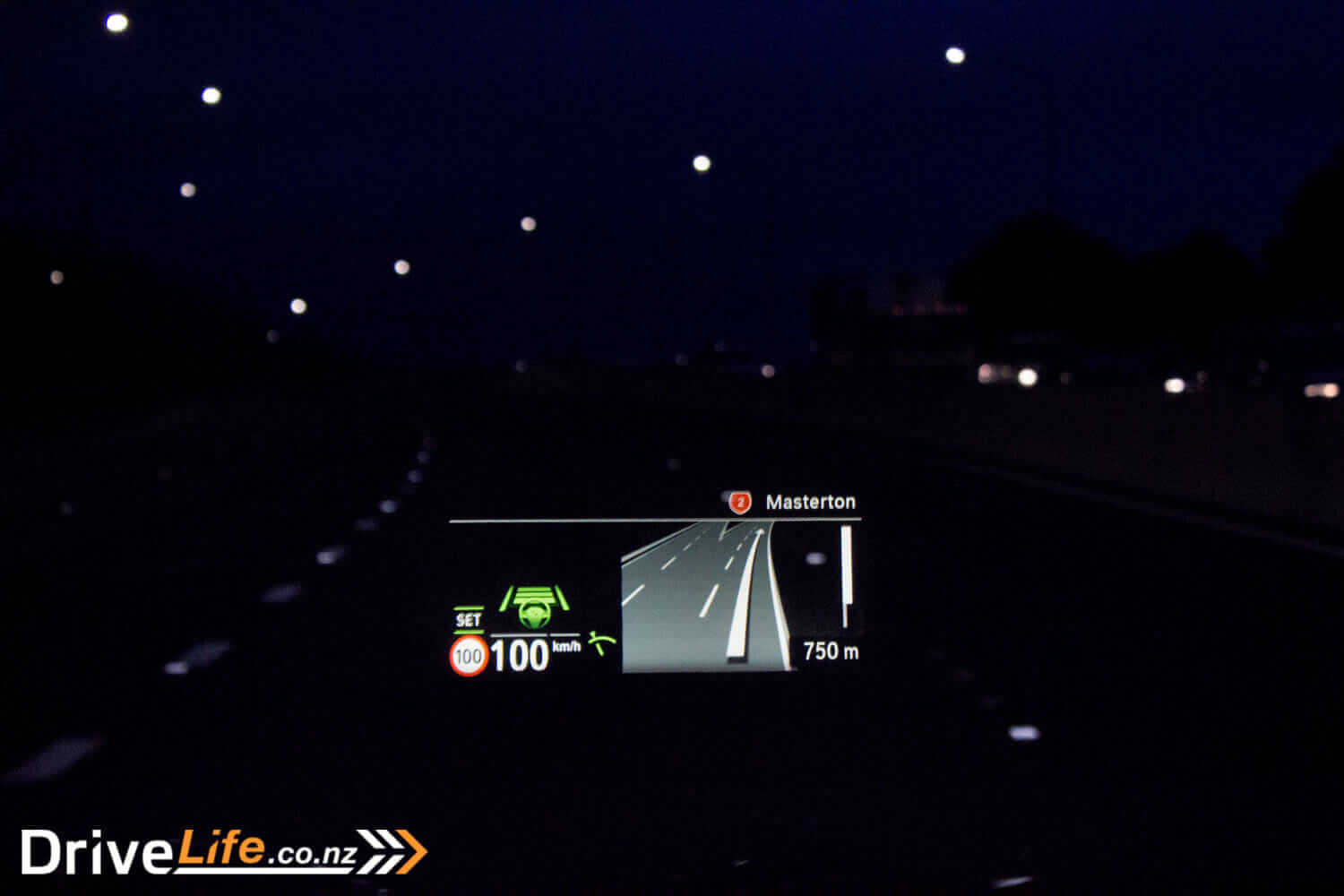
You will have noticed that the M50d comes with a Harmon Kardon audio system as standard. The audio system on the xDrive30d was pretty good, and the HK system in the M50d is better again. Live music is where it sounds best, with stunning clarity and separation. I’m still not sure if it’s better than the Burmester system that Mercedes Benz uses, but I’d be happy with either.
Our xDrive30d test car had the optional Laser Lights package, and this is standard on the M50d. Since it was darker so much earlier during our test, I really got to hammer the headlights to compare them to ‘normal’ headlights. I said in the last test and it’s worth mentioning again; BMW’s standard intelligent headlights are pretty bloody good. Are the Laser Lights that much better? After spending a lot more time with them, a full-on Yes. They can go so far ahead of you on a country road (up to 600 metres), and performance is superb. They’re GPS-enabled as well, so before you get to (say) a right-hand corner, the lights are already turning to the right in anticipation. It doesn’t get much better than that.
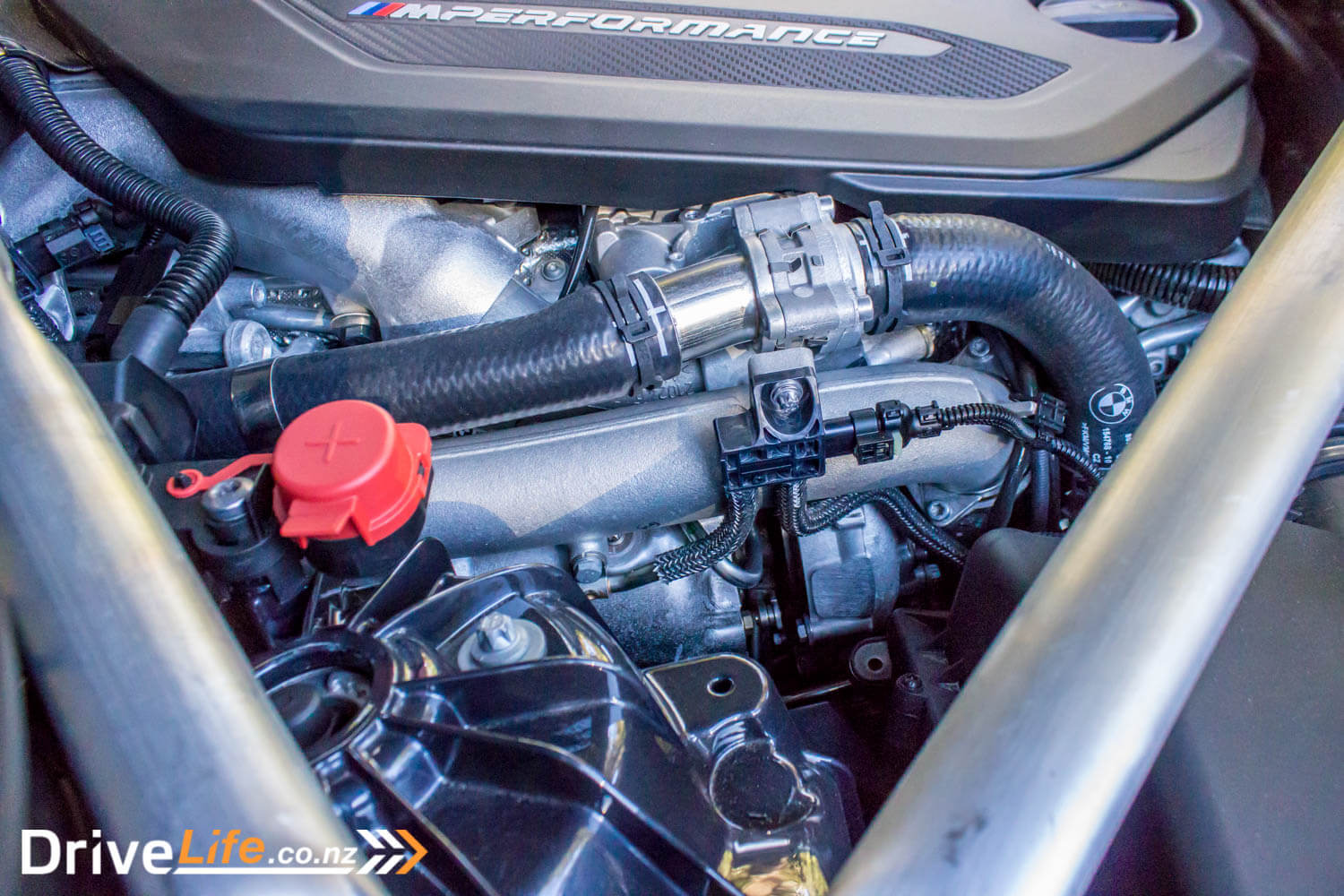
I wonder how many people reading this are wondering when I’m finally going to talk about the performance of the M50d, when it has four turbochargers. I’ve purposely left this until now, to get the more mundane things out of the road.
One word sums up the M50d: Effortless.
Hills? Might as well be flat. Accelerating up any hill will see you shooting forward at an alarming rate, and you will need to watch your speed, as I’m sure completely illegal speeds are obtainable far too quickly, up any gradient.
With three of the turbos spinning constantly, turbo lag is non-existent, and when you hit 2,750rpm the other turbo makes an entrance, giving you another solid push in the back. I’m trying to avoid using clichés here, or words that I really want to, like ‘holy crap’, but it’s not easy.
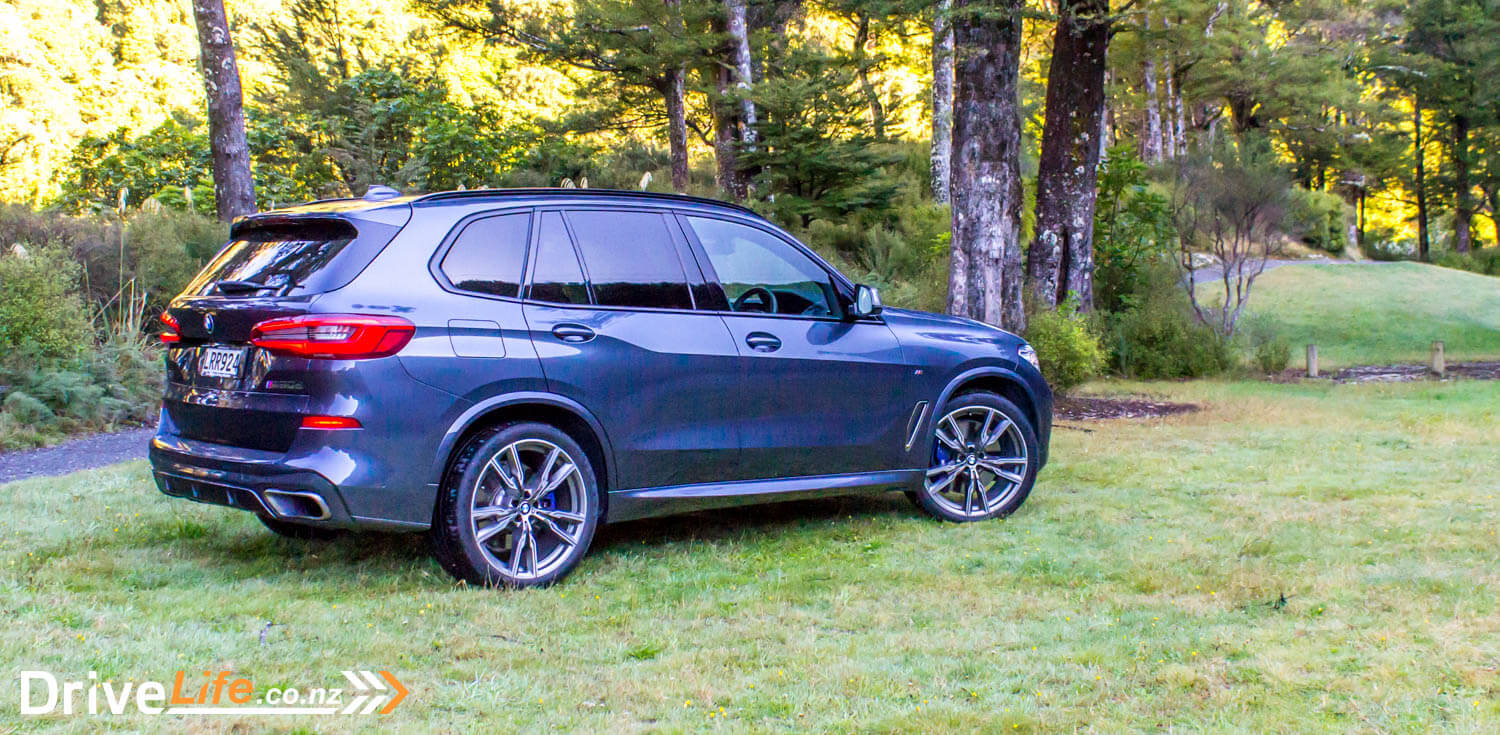
The X5 is no M5 – it’s not the same smack that you get with the M5, but for a car this big and heavy, it’s mind blowing. The M50d is really wasted on New Zealand roads, it deserves to be sitting at 230km/h all day long on the autobahn, not stuck behind cars tootling along on the open road at 80km/h, oblivious to anyone behind them. At 100km/h there’s almost total silence, with a whisper of tyre noise coming into the cabin. Otherwise, it’s as about as serene a place as you could get.
Get the car out on to some back roads and let it have its head though, and it will reward you with a big, fat grin. Grip is phenomenal from those Continental tyres, with the 315/30 rears keeping it all in check. They’re 22-inch rims as standard, and this thing can hold its own when it comes to handling. There’s still body roll and understeer if you push it too hard, but the grip is always there.
I would have liked a bit more steering feel, but with front tyres at 275/35 and a large SUV weighing in at 2,350Kg, it’s probably as good as it could be. And anyway, unless you are a complete lunatic, you should be safe knowing the grip at the front will keep you out of trouble.
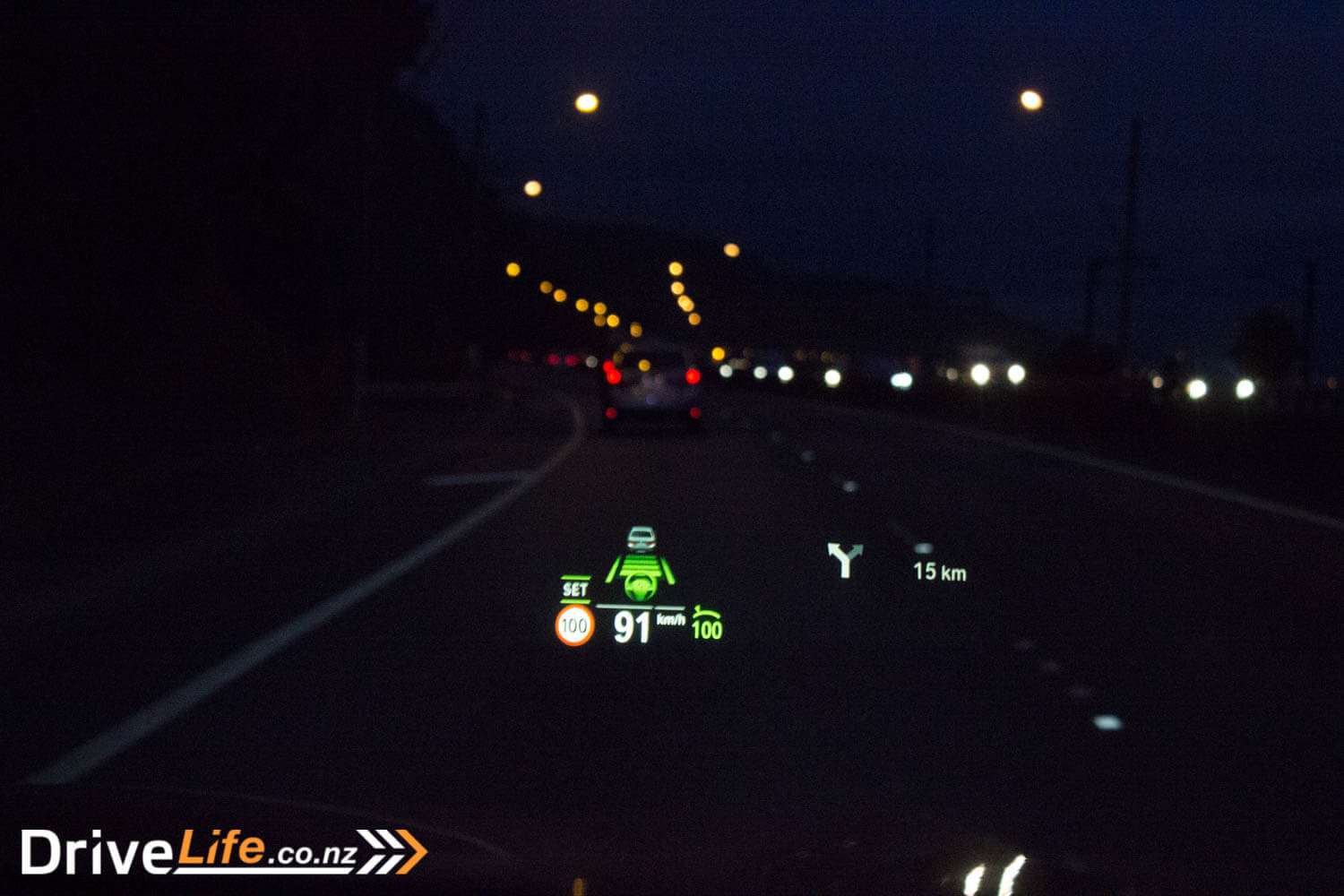
The M50d is the only model of X5 that has ‘Integral Steering’. The generic term for this is four-wheel steering. BMW says that the Integral Active Steering (likewise available as an individual option) is also operated electromechanically. By turning the rear wheels in either the same direction as the front wheels or the opposite direction – depending on the vehicle speed – it optimises cornering agility, ensures effortless lane changes and helps the vehicle to dart through city traffic.
Integral Active Steering apparently therefore makes light work of manoeuvring into and out of tight parking spots, while also increasing stability when overtaking at motorway speeds.Did I notice any difference? Not really. It felt the same as the base model of X5, although I’m sure it must have some difference. Possibly you’d need to drive them back-to-back to feel any difference. Parking too, felt the same. Those who recall the original four-wheel steering Honda Prelude will remember the difference in parking at least, that four-wheel steering made on that car.
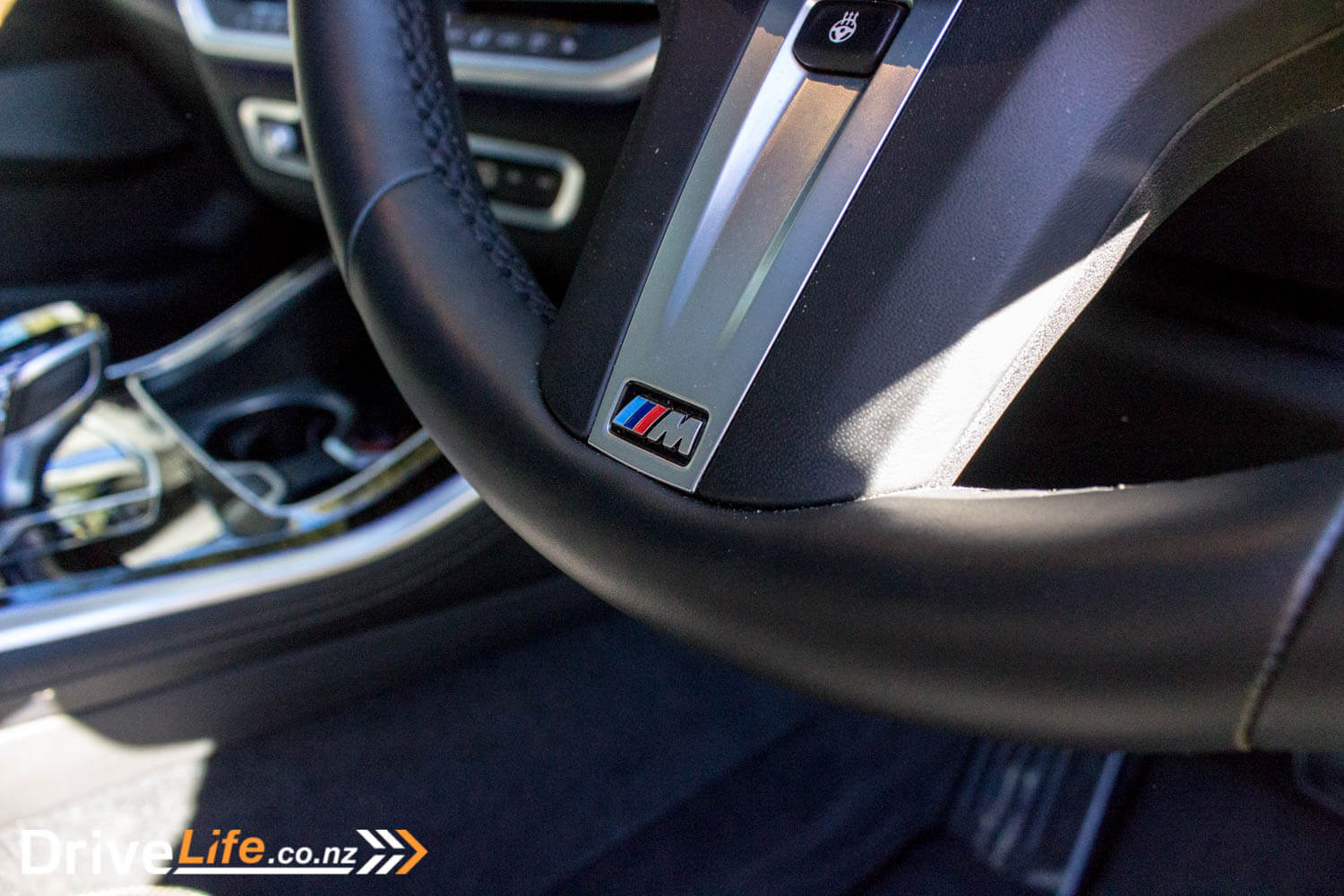
In saying that, the M50d has Parking Assistant Plus, which is a step above your normal automatic parking system; The Plus version will also do the brakes and accelerator, meaning you can almost just sit back and let the car park itself.
I have to keep going back to the grip of the M50d. One day in the pouring rain, I accelerated away from a standstill at full throttle. Four-hundred horsepower were let loose, and no wheel-spin was heard or felt. The M50d just got up and went.
Another revelation of this quad-turbo engine: incredible smoothness. Let me just say the xDrive30d was smooth as hell too, but I thought that this one would be less so – surely? But no, if anything it was even smoother than the base model, and didn’t once sound like a diesel. In fact, it makes delicious sounds when you get the revs up even a little bit. There are those that will say it’s fake noise, and/or electronically enhanced. The word is from BMW that that isn’t true – the delicious noise the M50d makes is all natural.
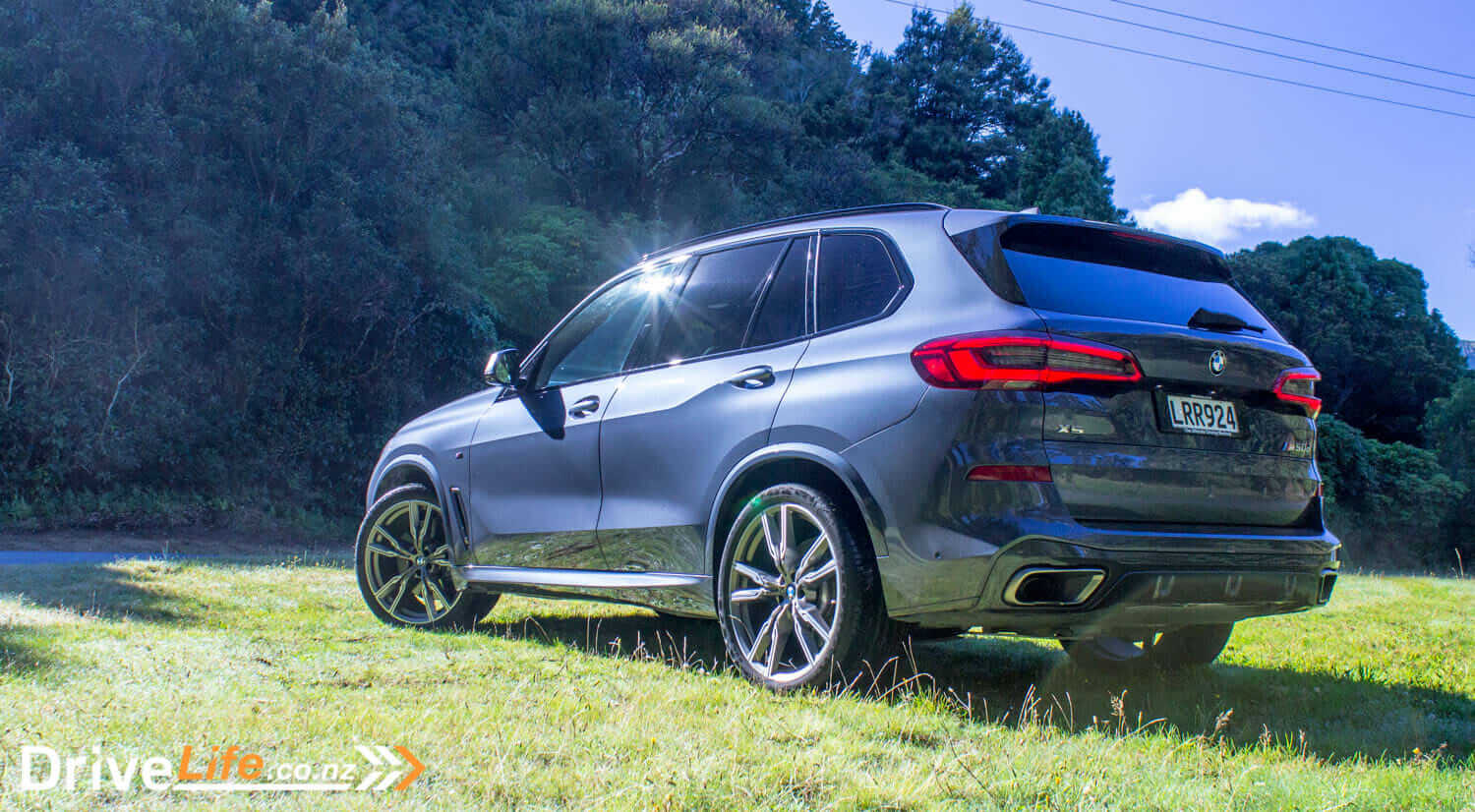
People did ask me how four turbos work on a six-cylinder engine. According to BMW New Zealand, the two low-pressure turbochargers and one of the two high-pressure turbos are permanently in action. Only under hard acceleration from idle will the two low-pressure turbochargers be bypassed by means of a flap control system. This allows boost pressure to be built up even more quickly. The second high-pressure turbocharger is brought into play at an engine speed of about 2,500 rpm. This all means that you get 450Nm of torque available at just 1,000rpm.

There’s the normal BMW drive modes available to you; Sport, Comfort (default), Eco Pro, and Adaptive. They’re all pretty self-explanatory. I preferred Adaptive, as it did seem to adjust everything perfectly to the driving conditions at the time. A shame though that you need to reselect your mode each time you start the car. I would have preferred it remembered what mode I had left it in. I used Sport mode now and then, but with so much low-down torque, it seemed a bit pointless.
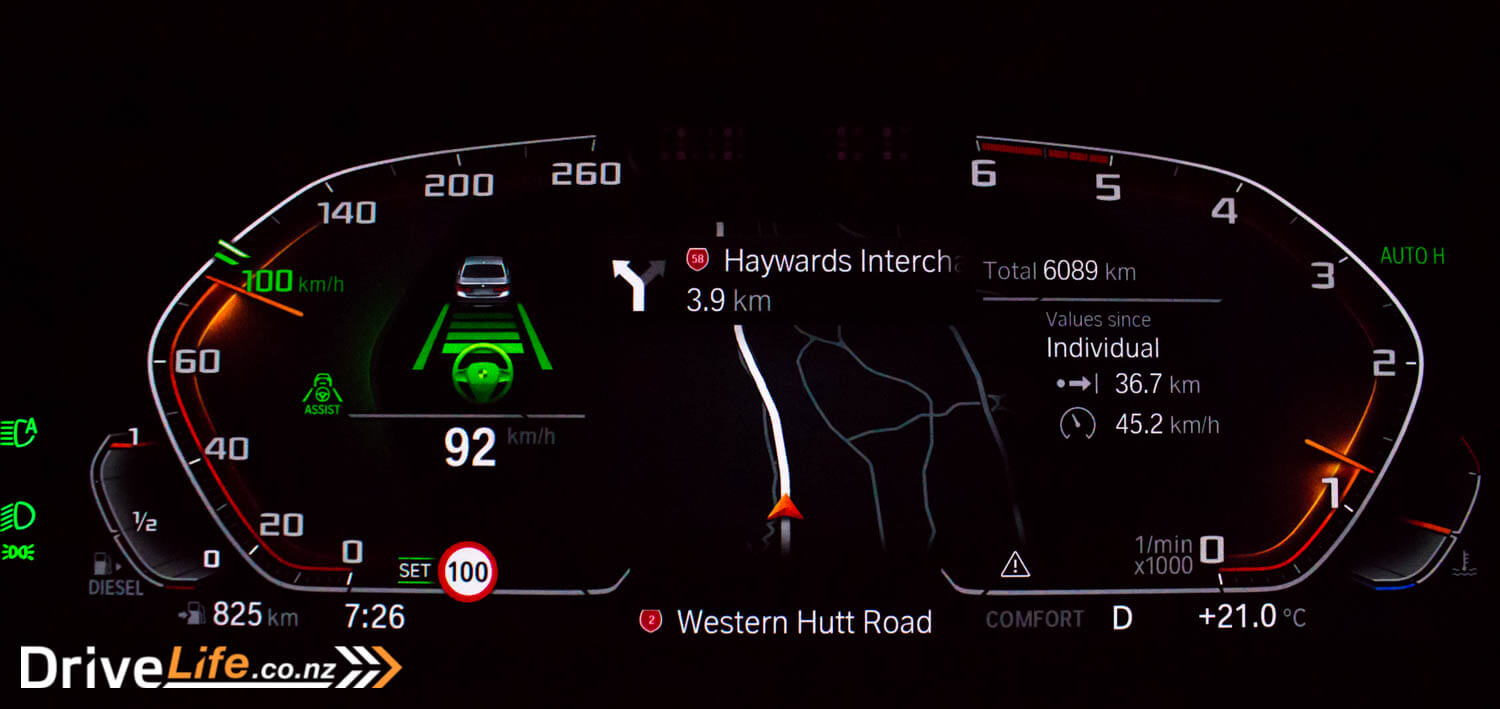
While having 294kW of power might seem a little scary, there’s always the brakes to haul you up. The huge discs will wash speed off very quickly, without any fuss or drama. I tried some repeated panic stops from 100km/h, with no drama at all.
You would think that having four turbos would make for a hot engine. The M50d has Active Shutters, so flaps in the grille will open and close as needed. I did notice that after a gentle motorway run, I drove for a couple of minutes at 50km/h then pulled into a Mitre 10. The engine cooling fans were going when I got out of the car, and ten minutes later when I got back, were still going. Not a bad thing, but a reminder that there’s some serious heat being generated under that bonnet.
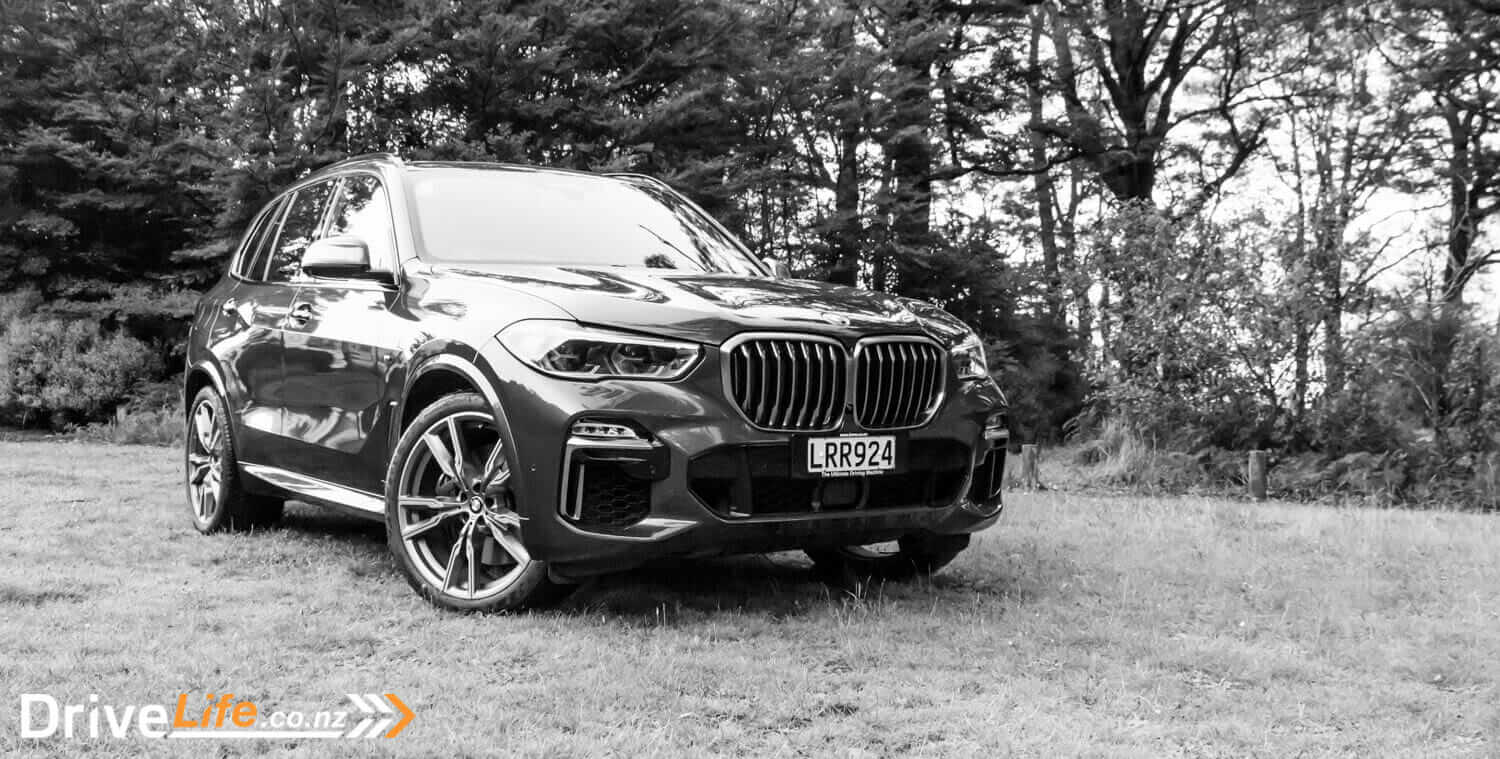
So, what about fuel economy? When we tested the xDrive30d, over 700km we got 9.1L/100km out of it, which was a way from the suggested figure but good for such a big, heavy car with a large engine. So add three more turbos to that engine, and you’d expect to use at least an extra litre of diesel per 100km. Over my 1,000km with the M50d, it used fuel at 8.2L/100km. I kid you not – over the same driving conditions and usage, it used less fuel that the single, twin-scroll turbo xDrive30d.
Does this mean we should all go and add more turbos to our engines? You can’t argue with the math.
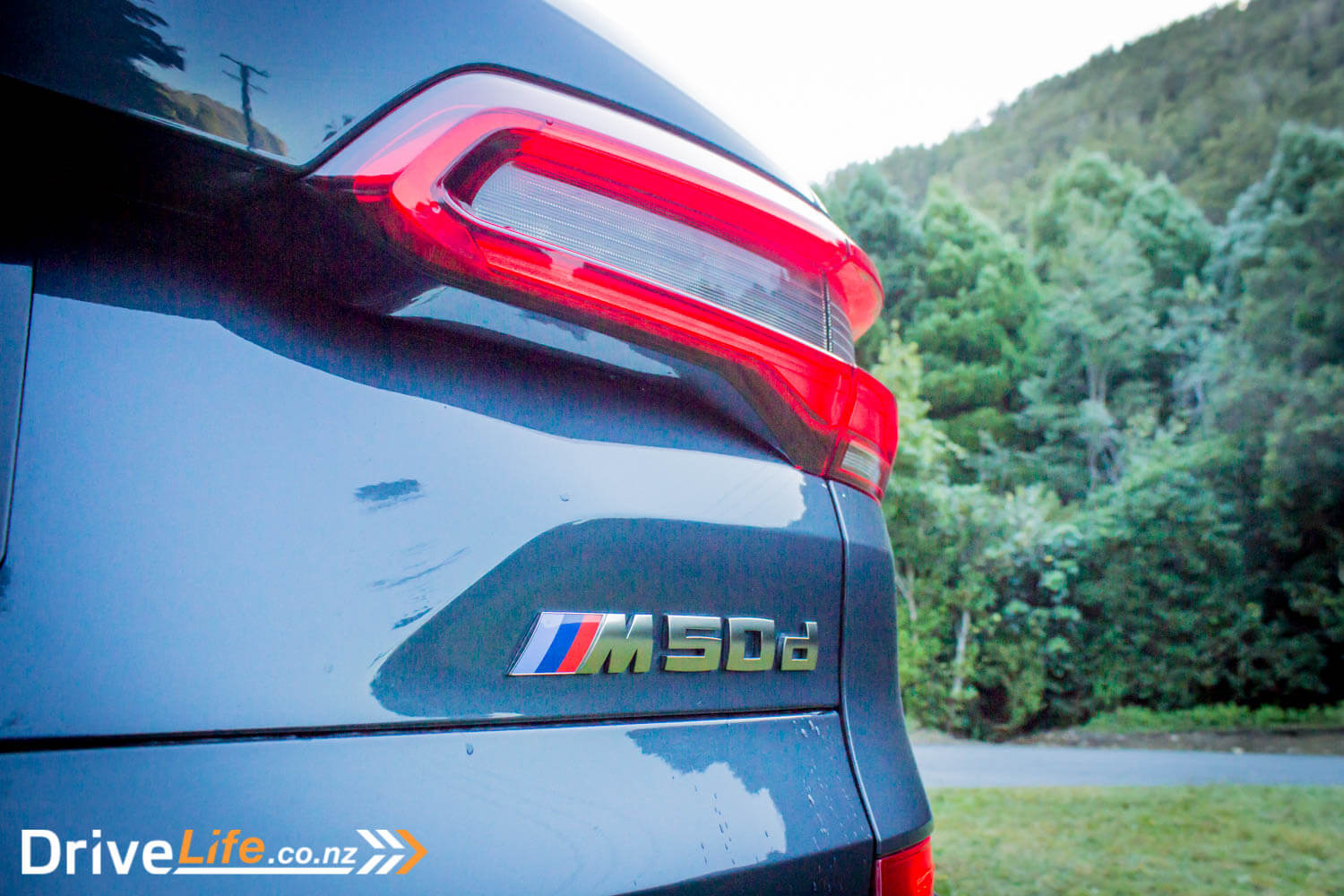
What’s The Competition For The 2019 BMW X5 M50d?
| Brand/Model | Engine | Power/ Torque kW/Nm |
Towing capacity, unbraked/braked (Kg) |
Seats | Cargo capacity, litres | Fuel L/100km | Price |
| Mercedes-AMG GLE 43 4MATIC | 5.5-litre, twin-turbo petrol V8 | 430/760 | N/A | 5 (7 opt) | 690 | 11.8 | $211,900 |
| BMW X5 x50d | 3-litre, quad turbo, straight 6 diesel | 294/760 | 750/2700 | 5 (7 opt) | 645 | 7.0 | $177,900 |
| Range Rover SDV8 HSE Dynamic | 4.4-litre, twin turb0 V8 diesel | 250/740 | NA/3500 | 5 (7 opt) | 900 | 8.4 | $167,900 |
| Lexus LX450D | 4.5-litre, twin-turbo V8 diesel | 200/650 | 750/3500 | 7 | NA | 9.5 | $160,100 |
| Audi Q8 | 3-litre, twin-turbo, V6 diesel | 210/600 | 750/3500 | 5 | 605 | 6.8 | $149,900 |
What’s The Pros And Cons For The 2019 BMW X5 M50d?
| Pros | Cons |
|
|
What’s Our Verdict On The 2019 BMW X5 M50d?
Smooth, gentle giant – that’s the M50d. It blows you away with its performance in all conditions, up any gradient. Thrown into the mix is the way it delivers this performance; quietness and smoothness are two of the M50d’s key attributes.
When we reviewed the xDrive30d, I couldn’t quite get it over the line to a five-chevron rating. This time, the niggles that I had with that model pale into nothing, with you have an engine/chassis combo that’s this good.
The X5 M50d is a stunning SUV.

2019 BMW X5 M50d rating: 5.0 Chevrons
2019 BMW X5 M50d – Specifications
| Vehicle Type | Large, 5-door AWD SUV |
| Starting Price | $177,900 |
| Price as Tested | $182,490 |
| Engine | 3-litre, straight six, quad-turbo diesel |
| Transmission | 8-speed automatic |
| Power, Torque | 294kW/760Nm |
| 0-100km/h, seconds | 5.2 |
| Spare Wheel | Space saver |
| Kerb Weight, Kg | 2,350 |
| Length x Width x Height, mm | 4922x2004x1745 |
| Cargo Capacity, litres | 645/1860 |
| Fuel Economy, L/100km | Advertised Spec – combined – 7.0 Real World Test – combined – 8.2 Low Usage: 0-6 / Medium Usage 6-12 / High Usage 12+ |
| Fuel tank capacity, litres | 80 |
| Towing Capacity Kg, unbraked/braked |
750/2700 |
| Turning circle, metres | 12.6 Small: 6-10m / Medium 10-12m / Large 12m+ |
| Warranty | Five-year warranty Three-year service inclusive programme Five-year roadside assist |
| ANCAP Safety Ratings | 5 Star |

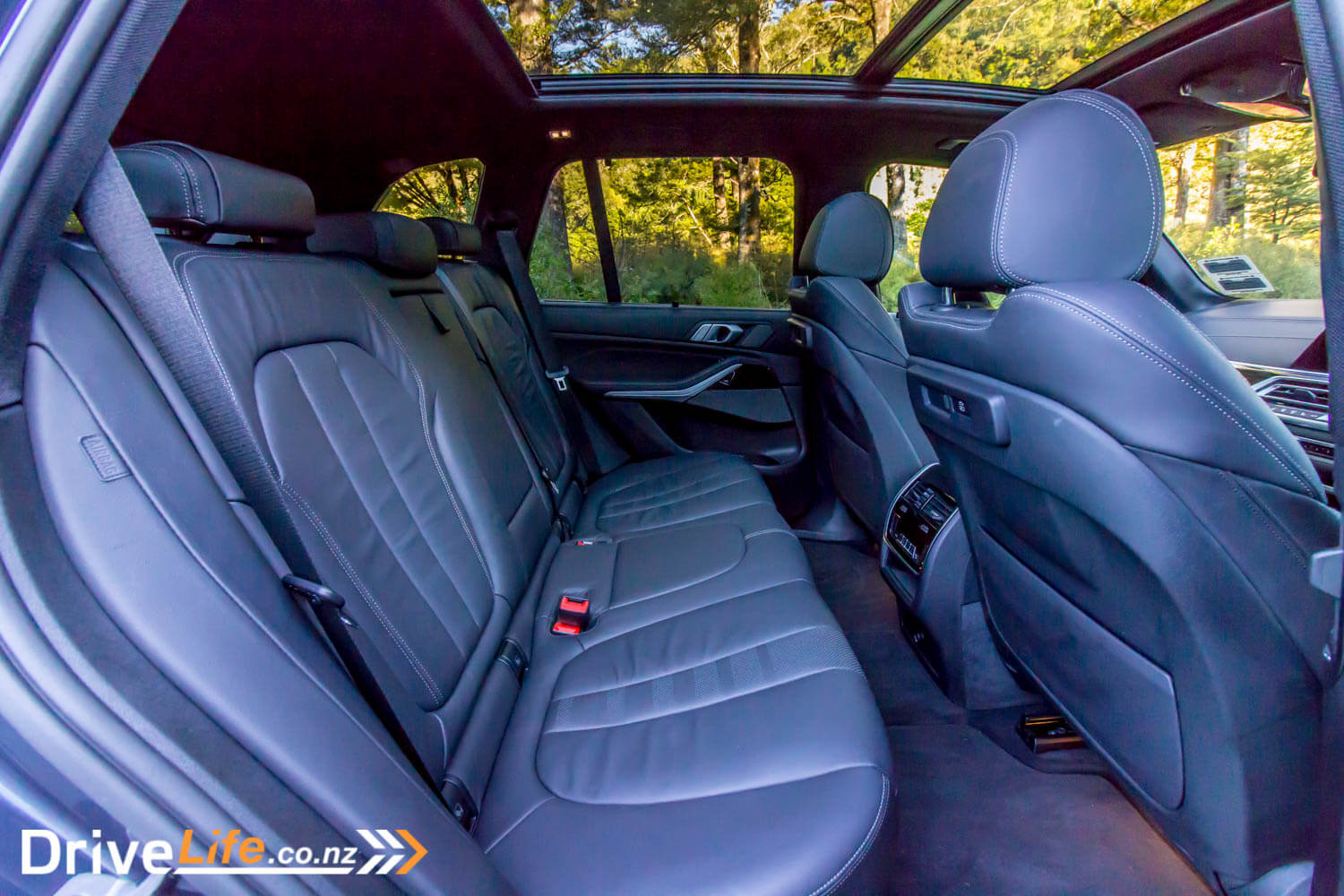
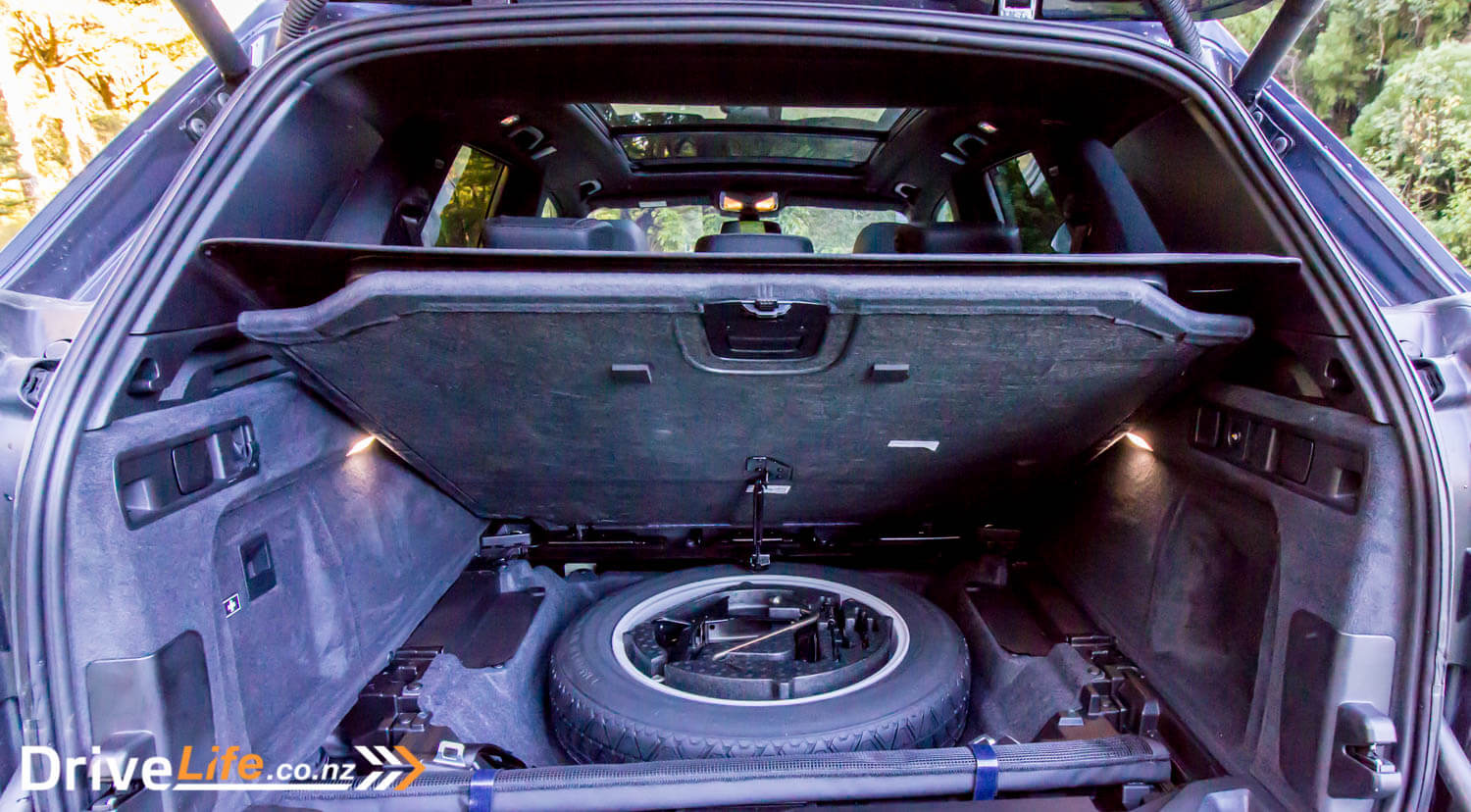
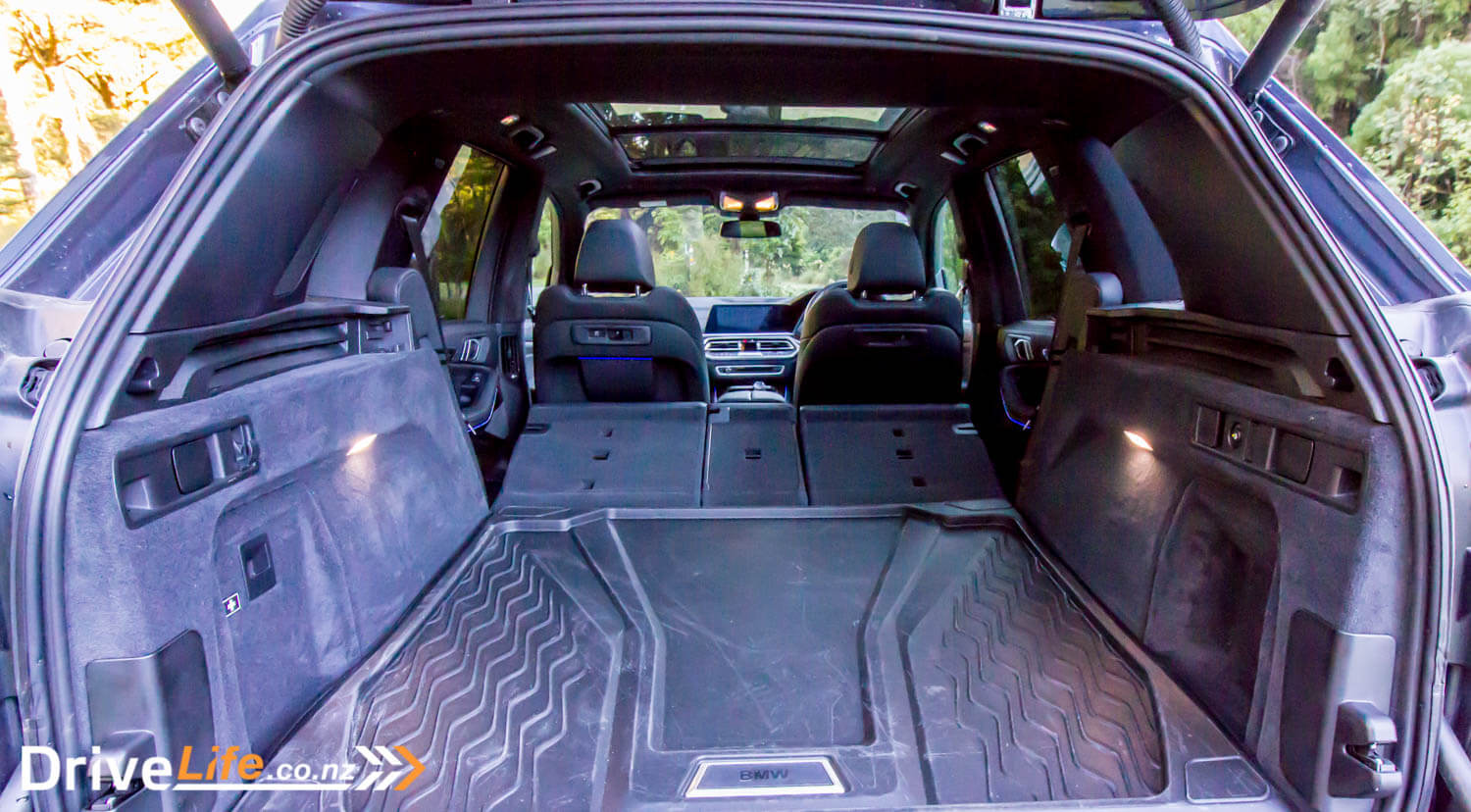
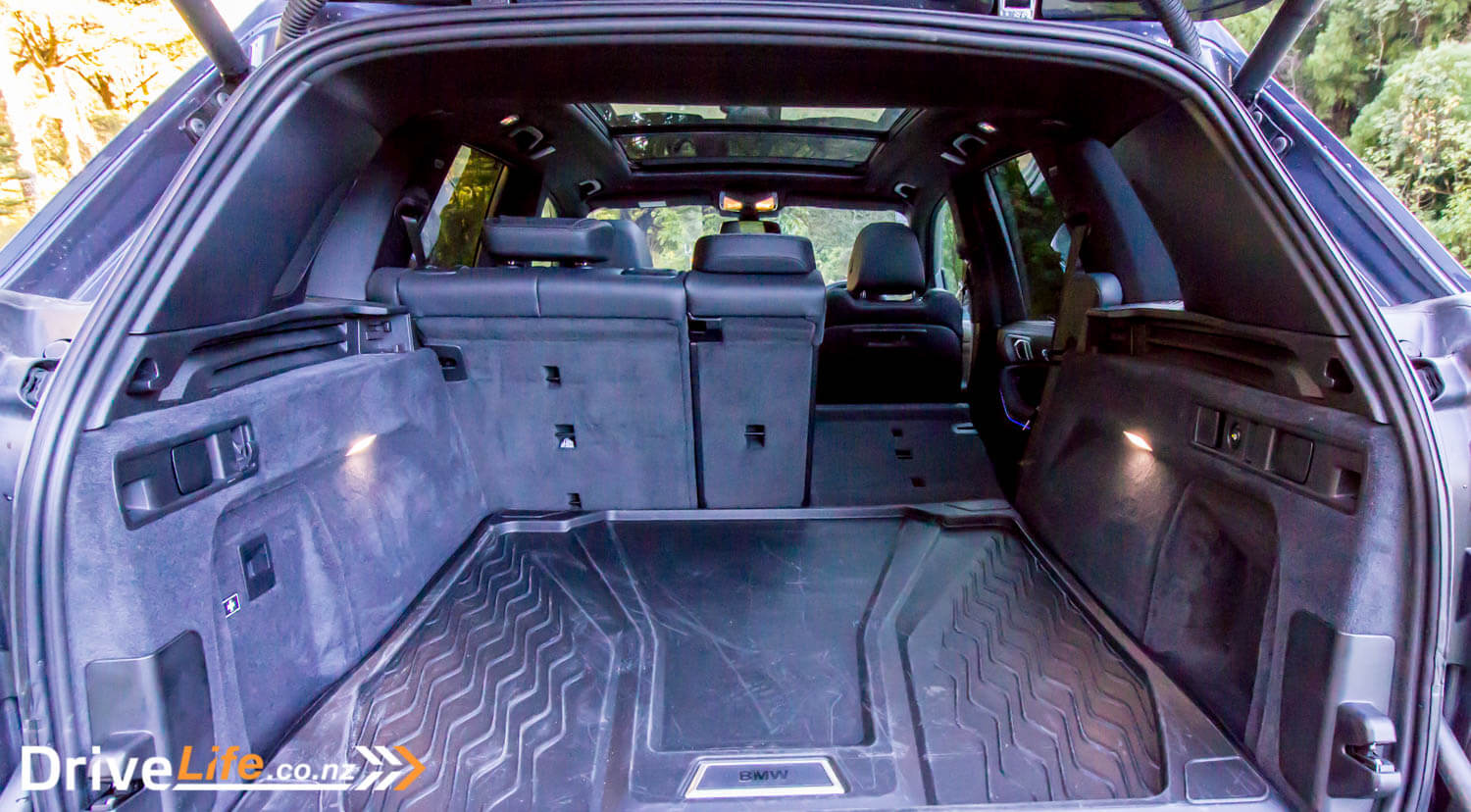
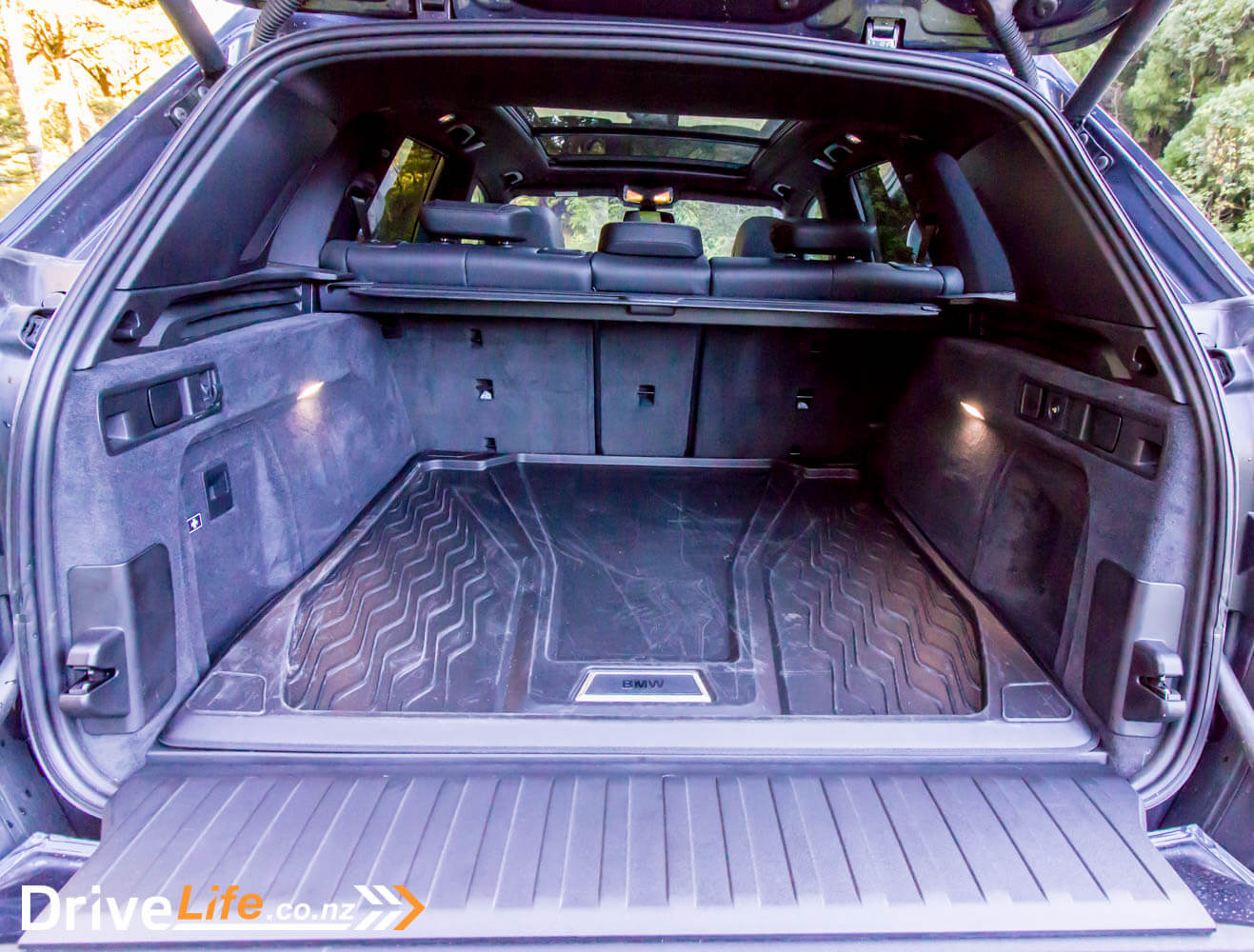

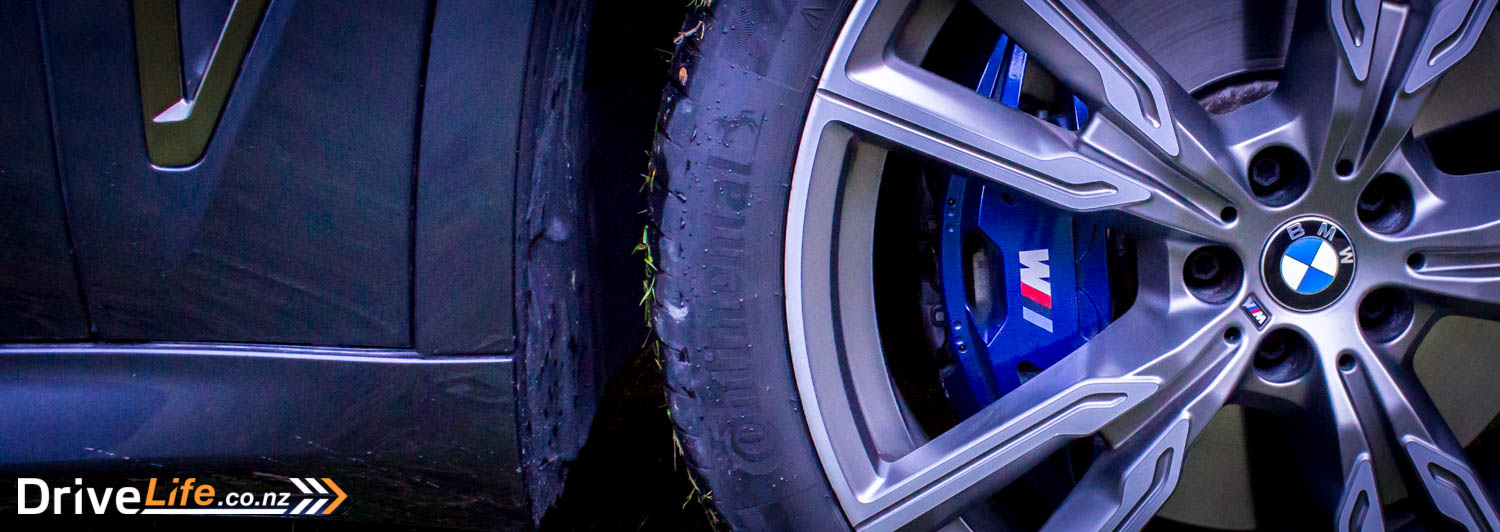

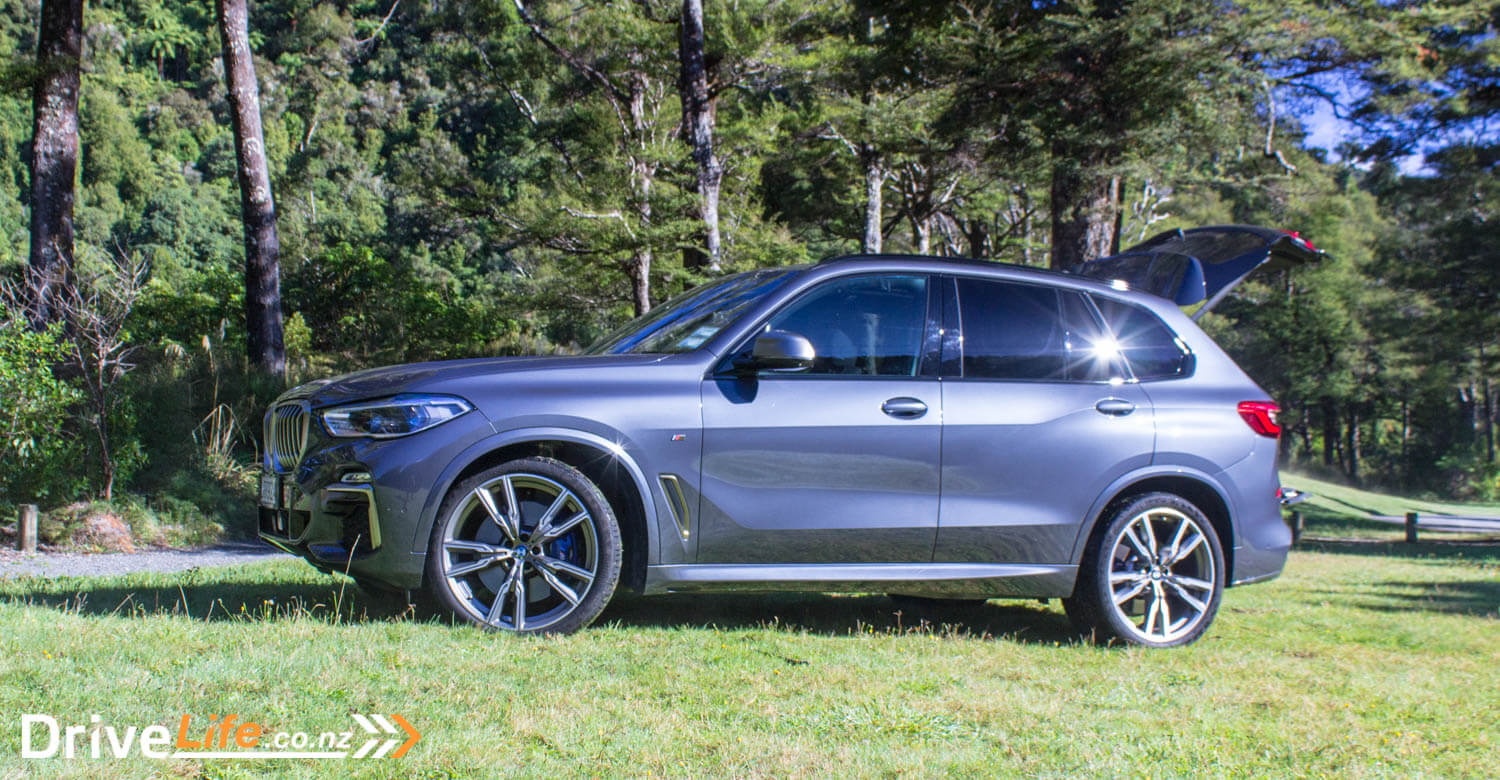
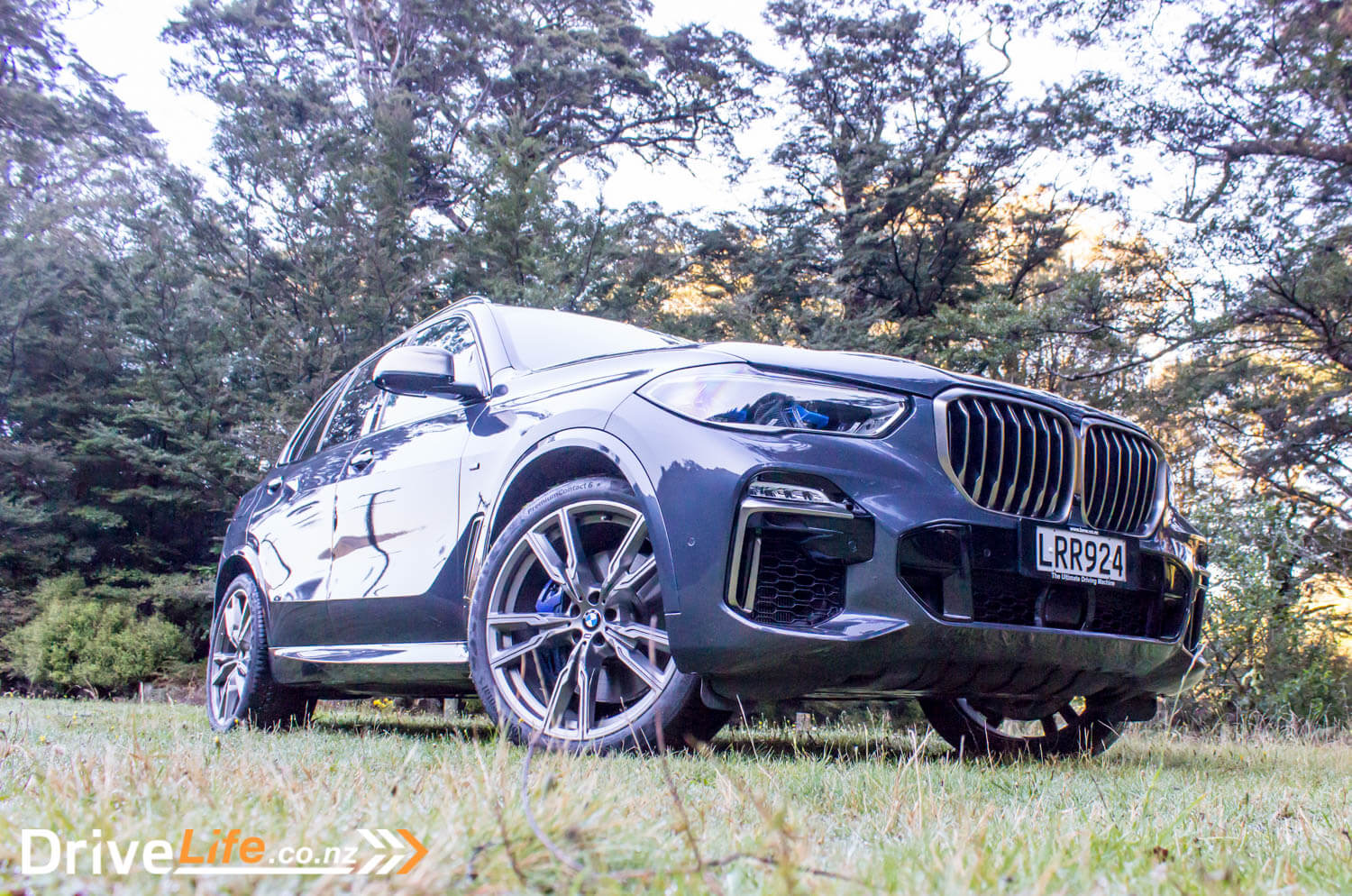
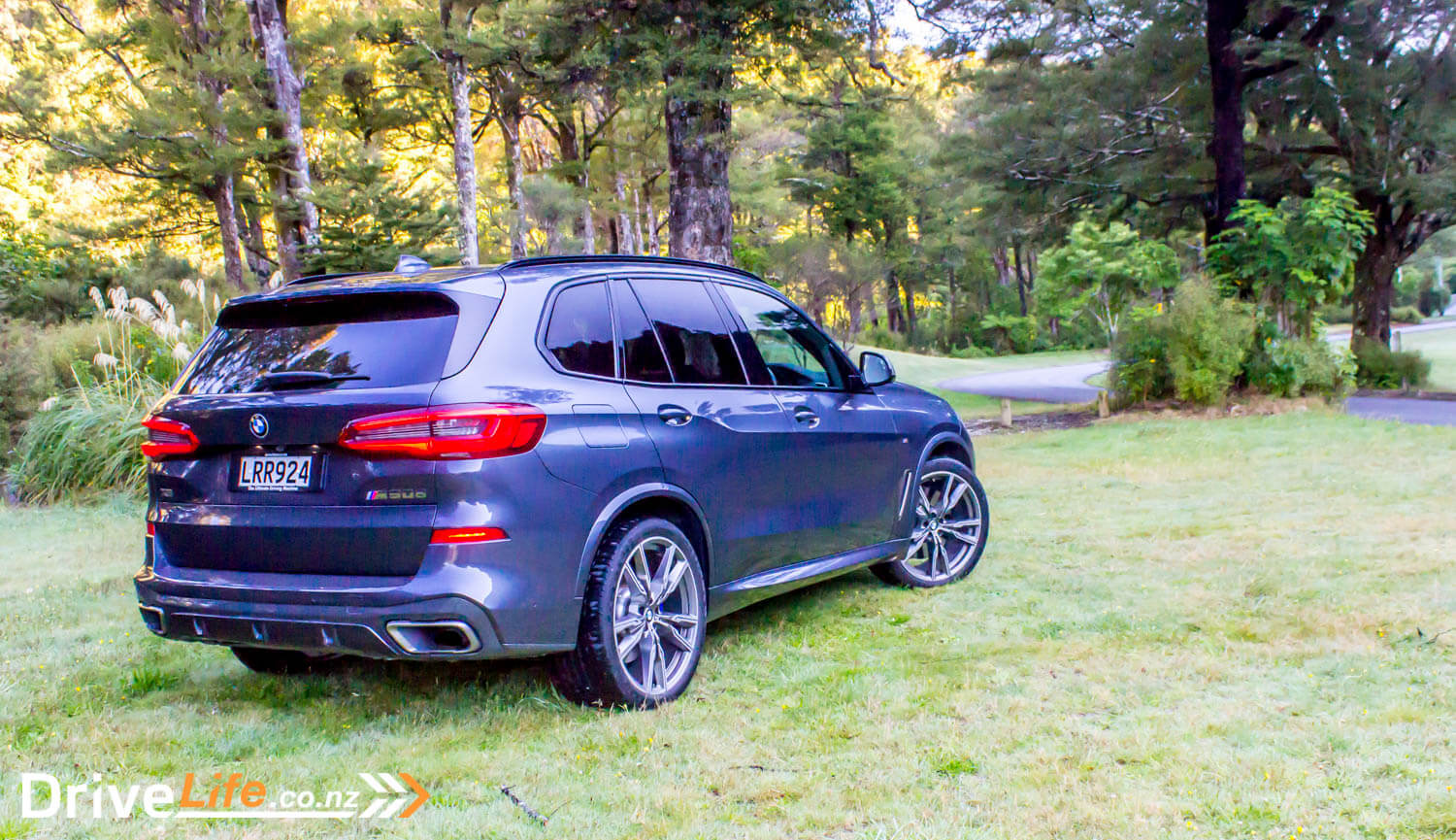



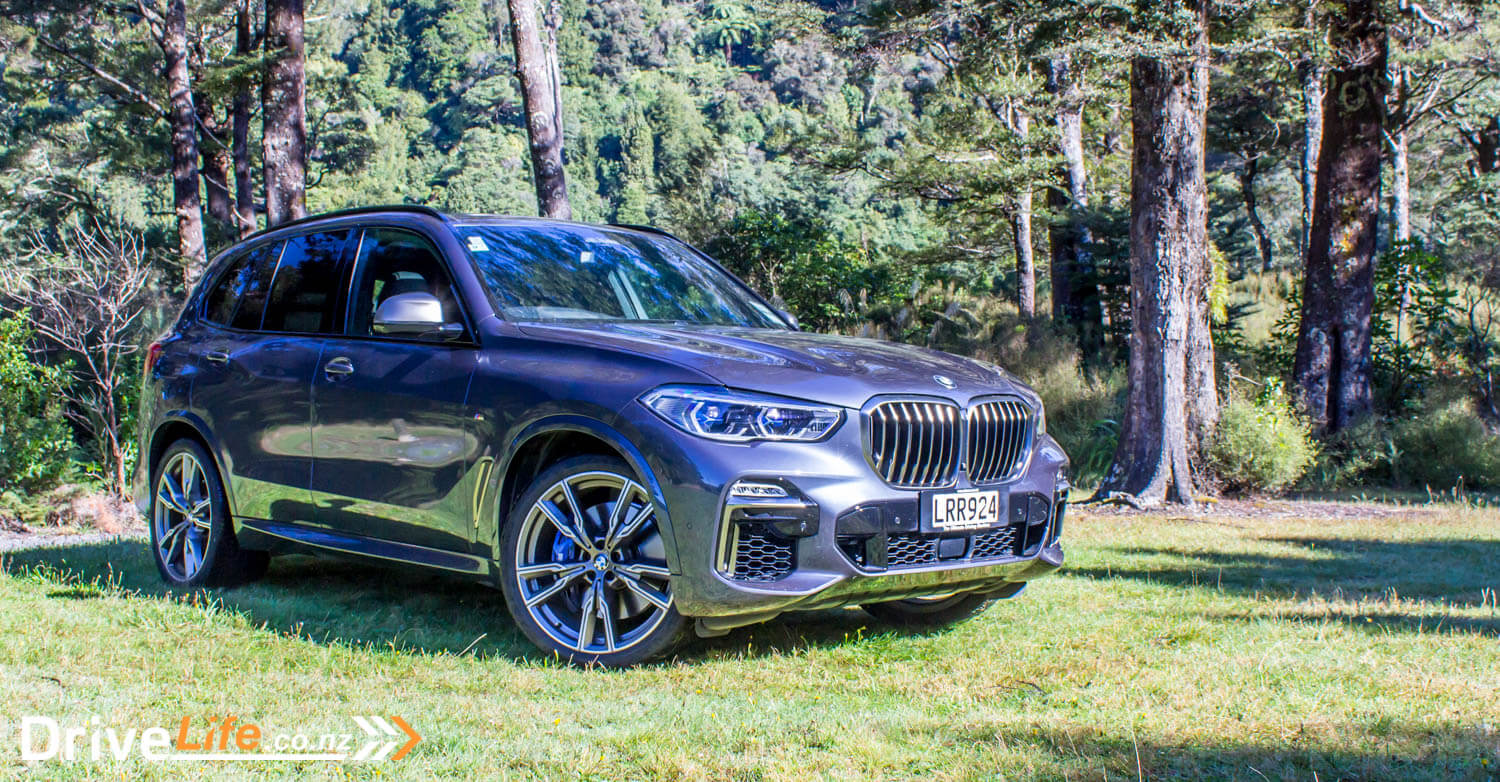











































Why do BMW’s persist with comically fat rimmed steering wheels ?
What possible reason can they have for reverse spinning rev counters ?
The interior looks a mess with switches and buttons everywhere.
Despite four turbos, it’s slower than the smaller X3 M40 and X2 M35 ?
HI Jason
They are quite fat, totally agree there, but they feel great in your hands. Reverse spinning rec counters? Yes, I don’t quite understand them either, but you don’t notice it after a while. The interior is great, for me anyway – you very quickly get used to where all the controls are, and things just fall to hand. But yes, there does seem to be more buttons than an MB or Audi – but it all still works well.
Performance-wise, it’s about the delivery, not the speed – and it delivers it brilliantly. The X30 M40i and X2 M35i are fast, no doubt, but a whole heap lighter, too.
Looking at your comments, I don’t think the M50d is for you 🙂